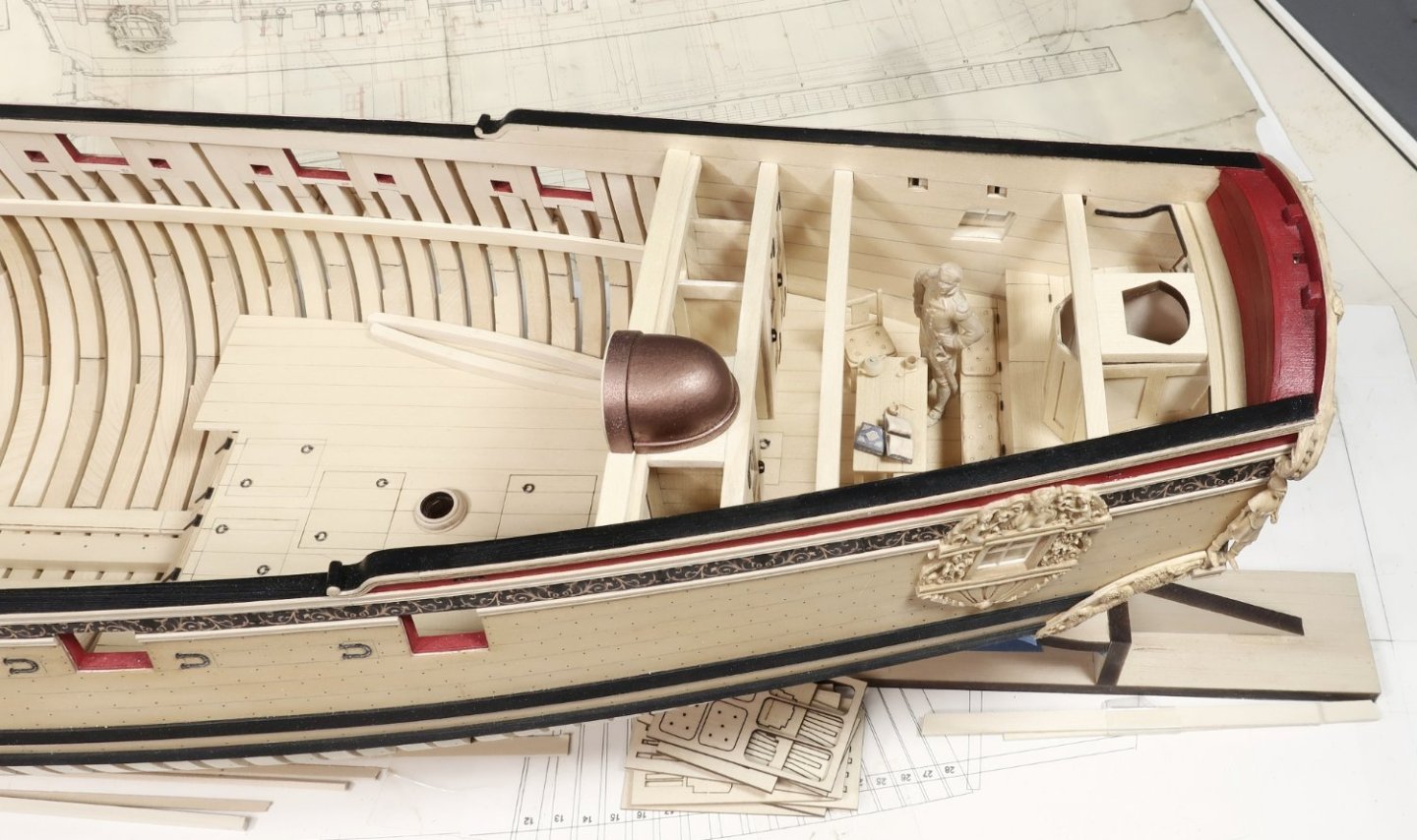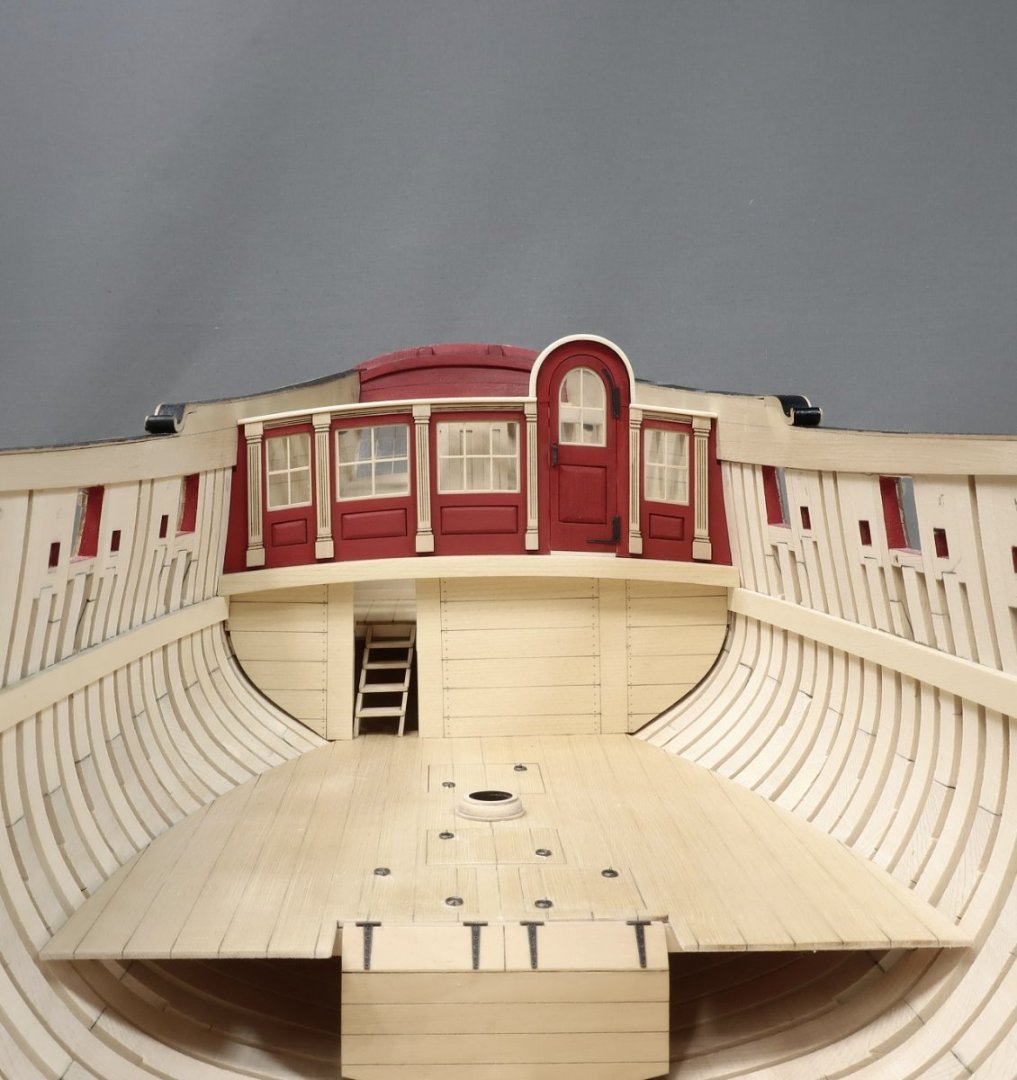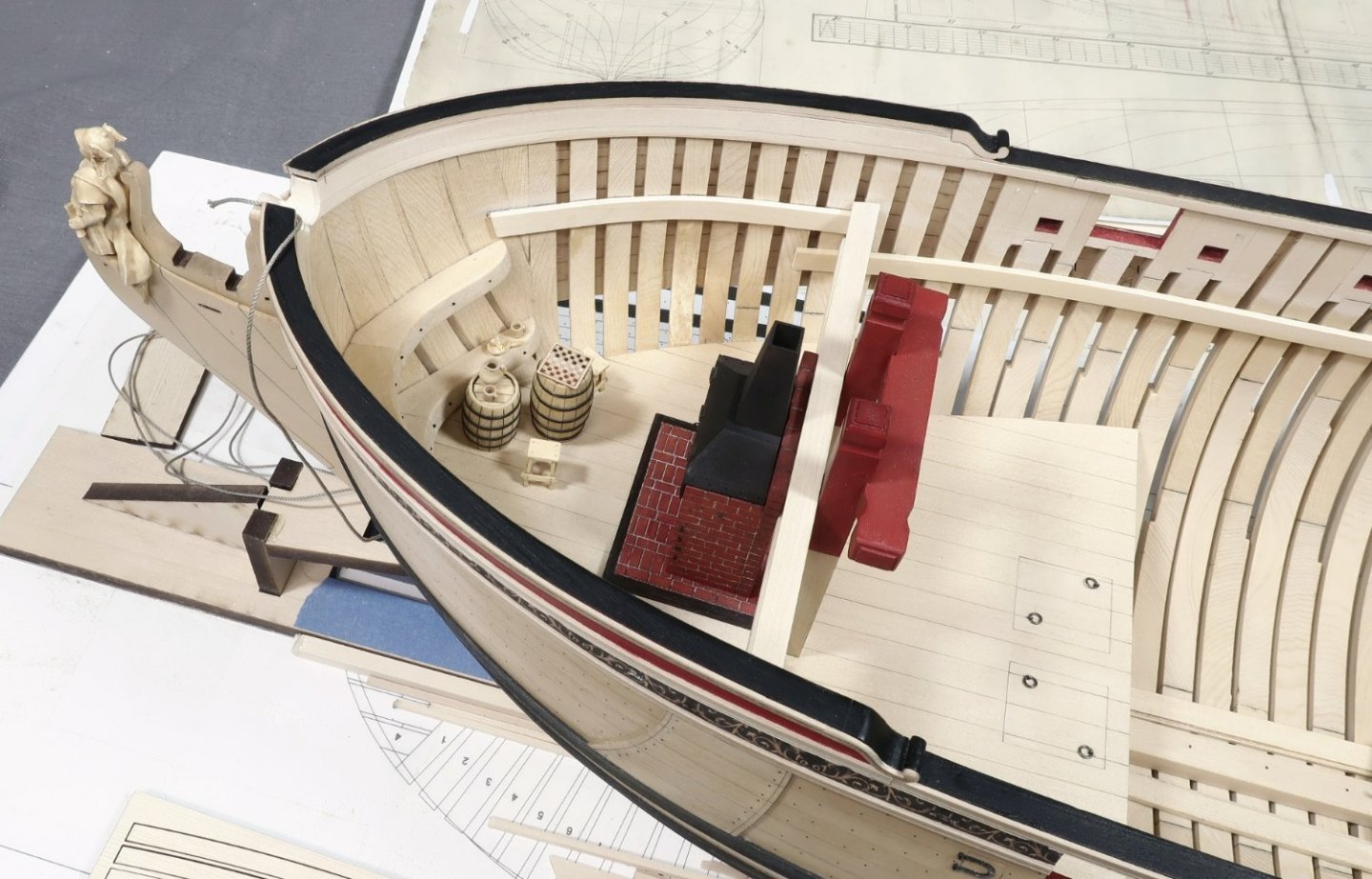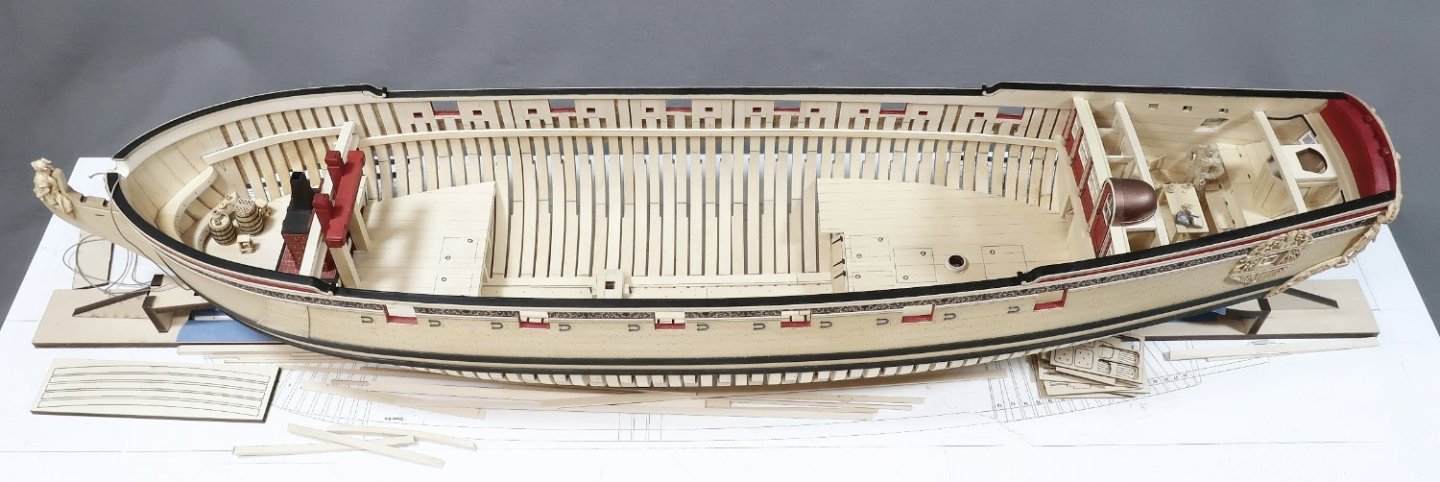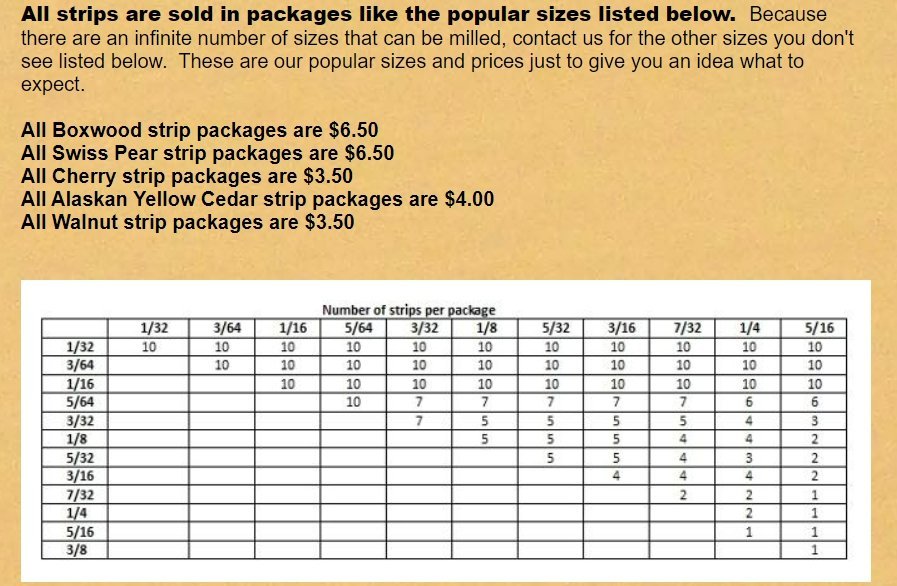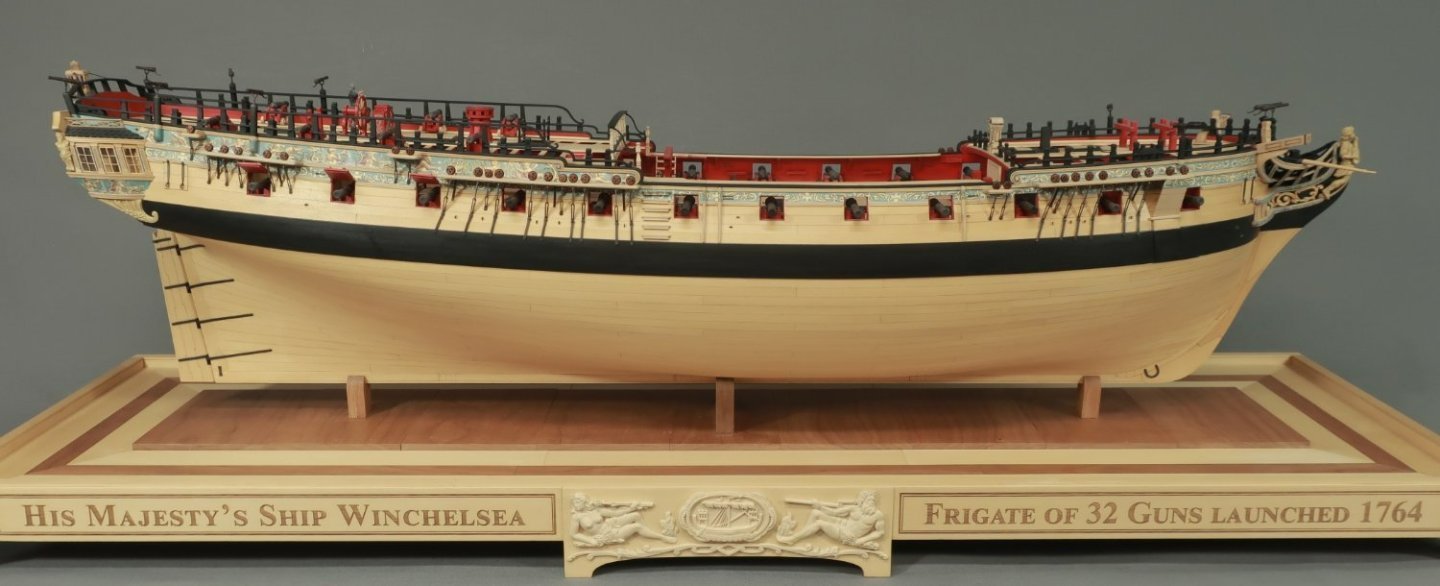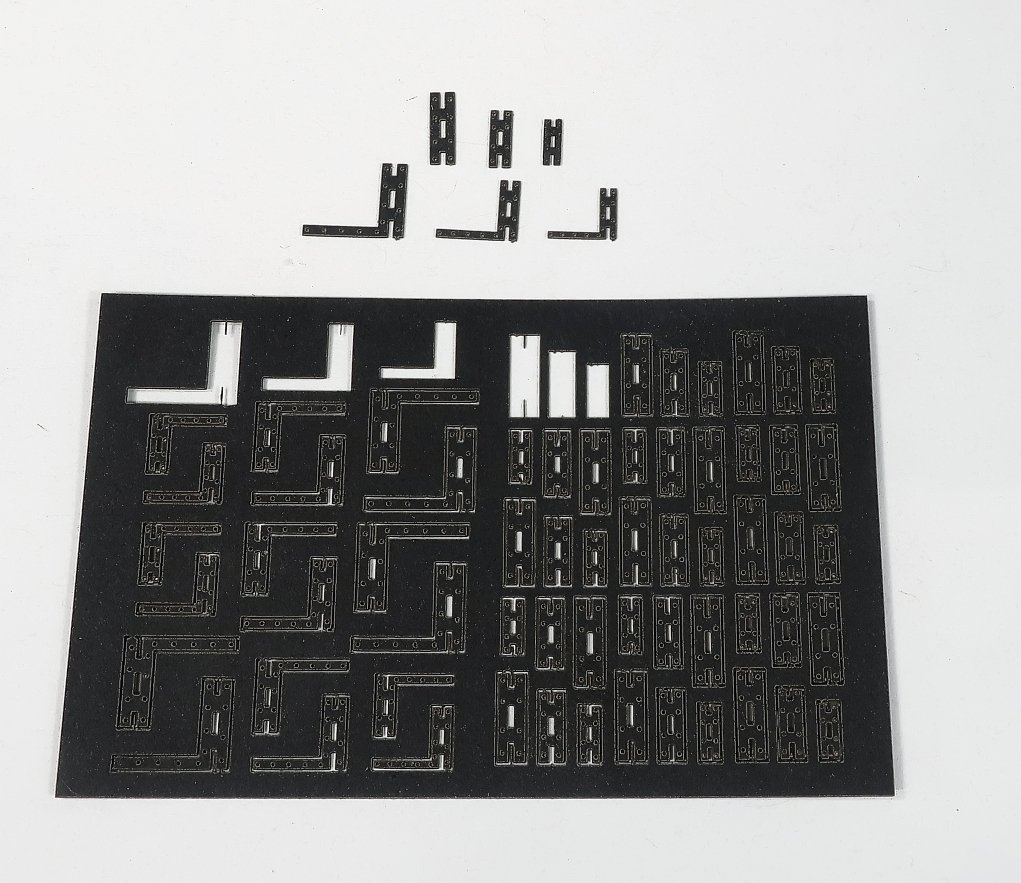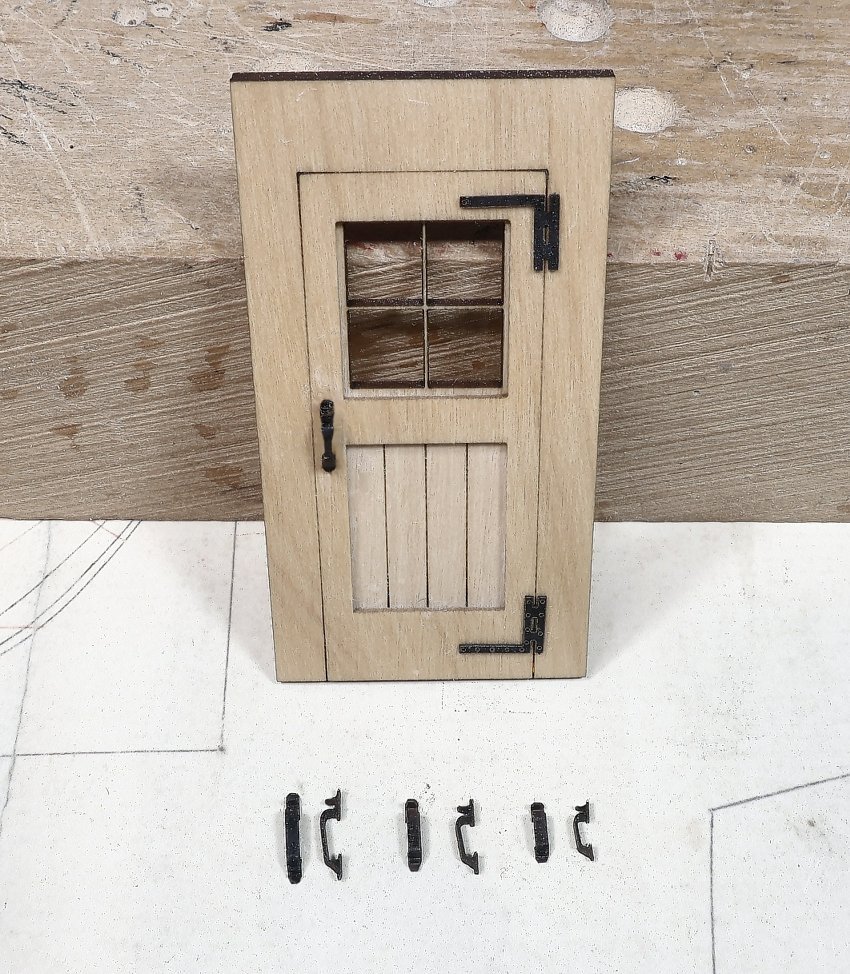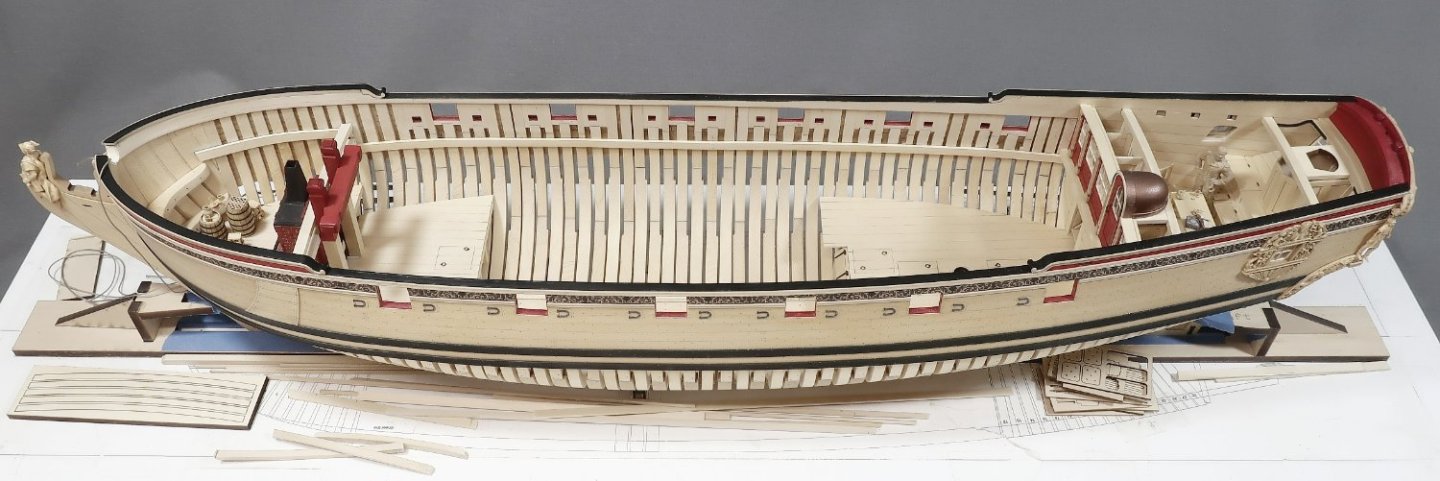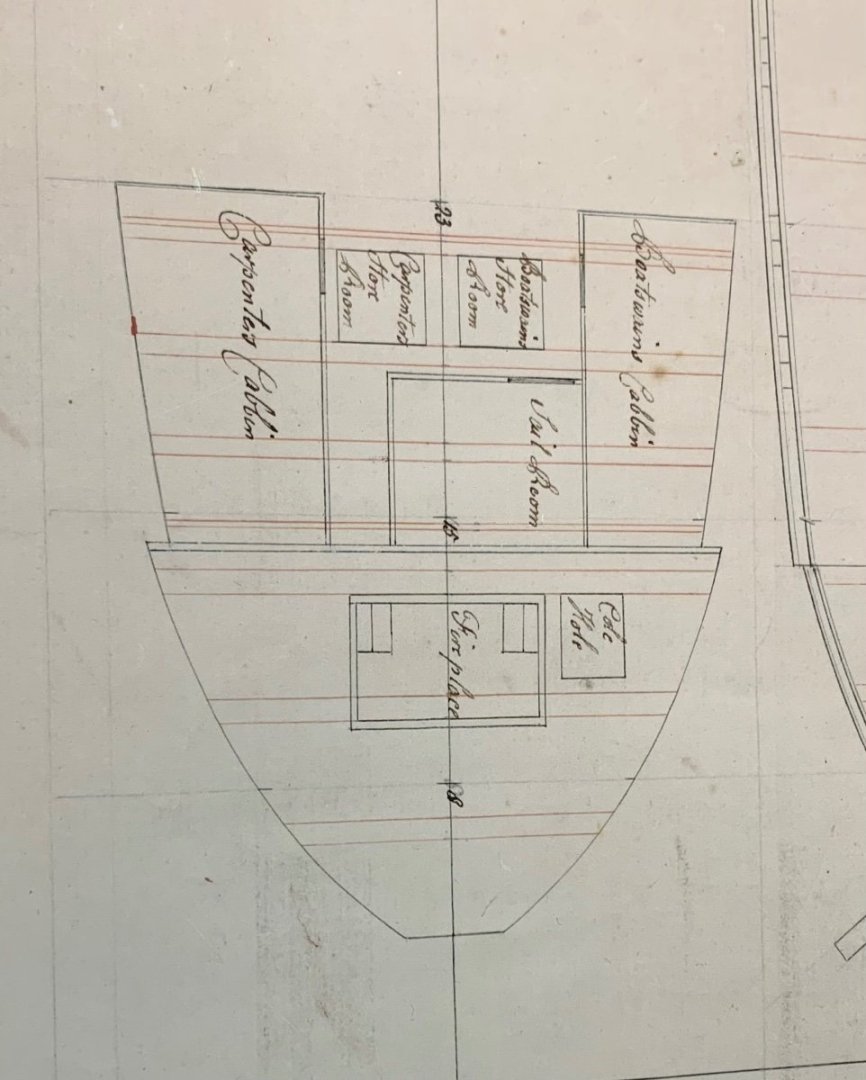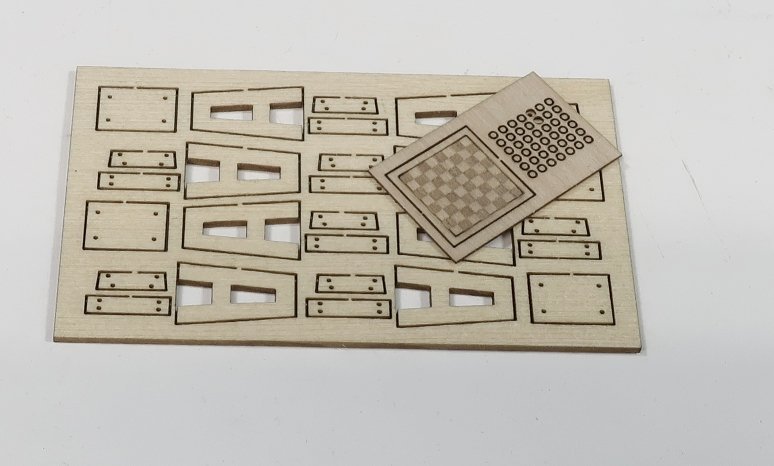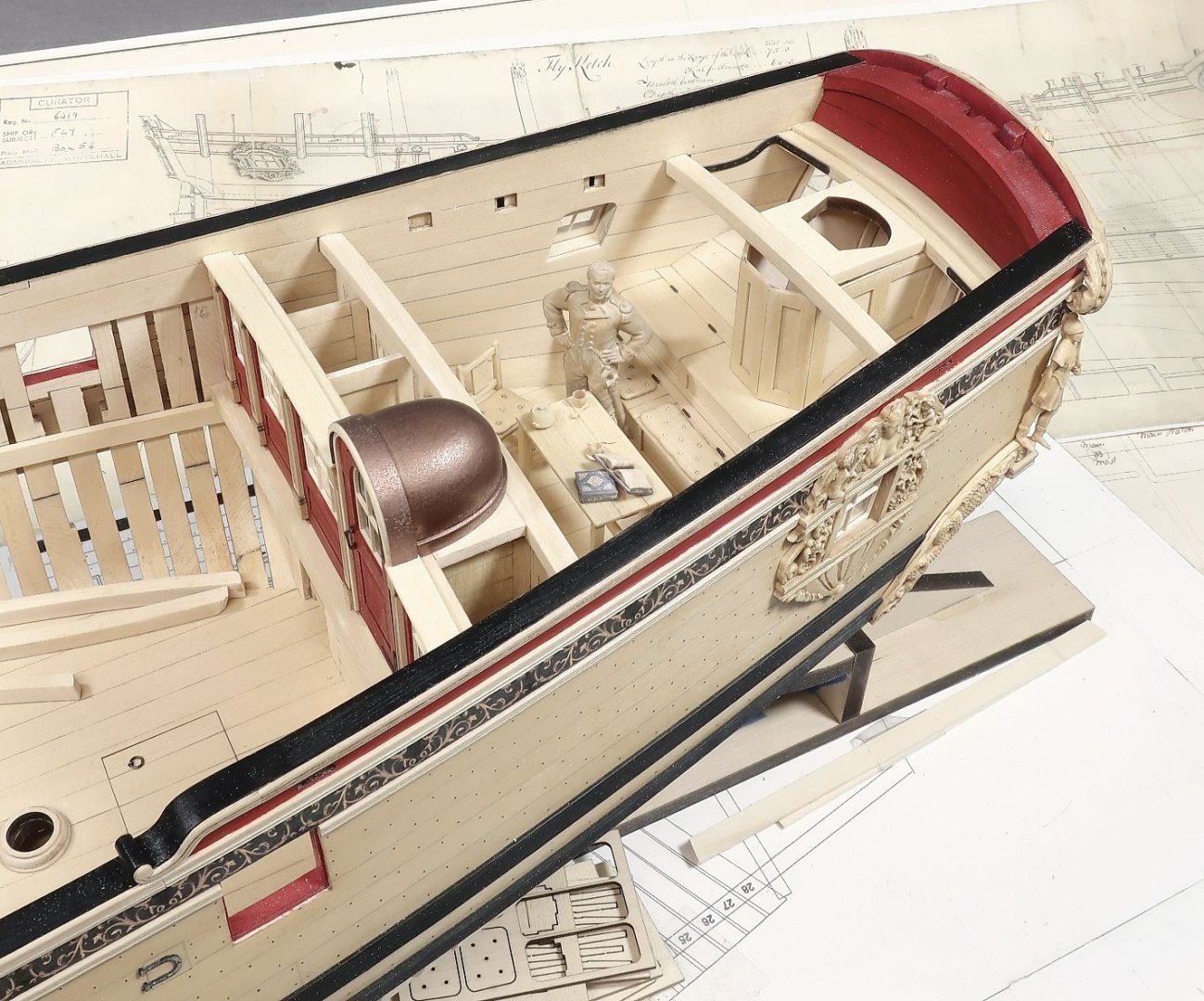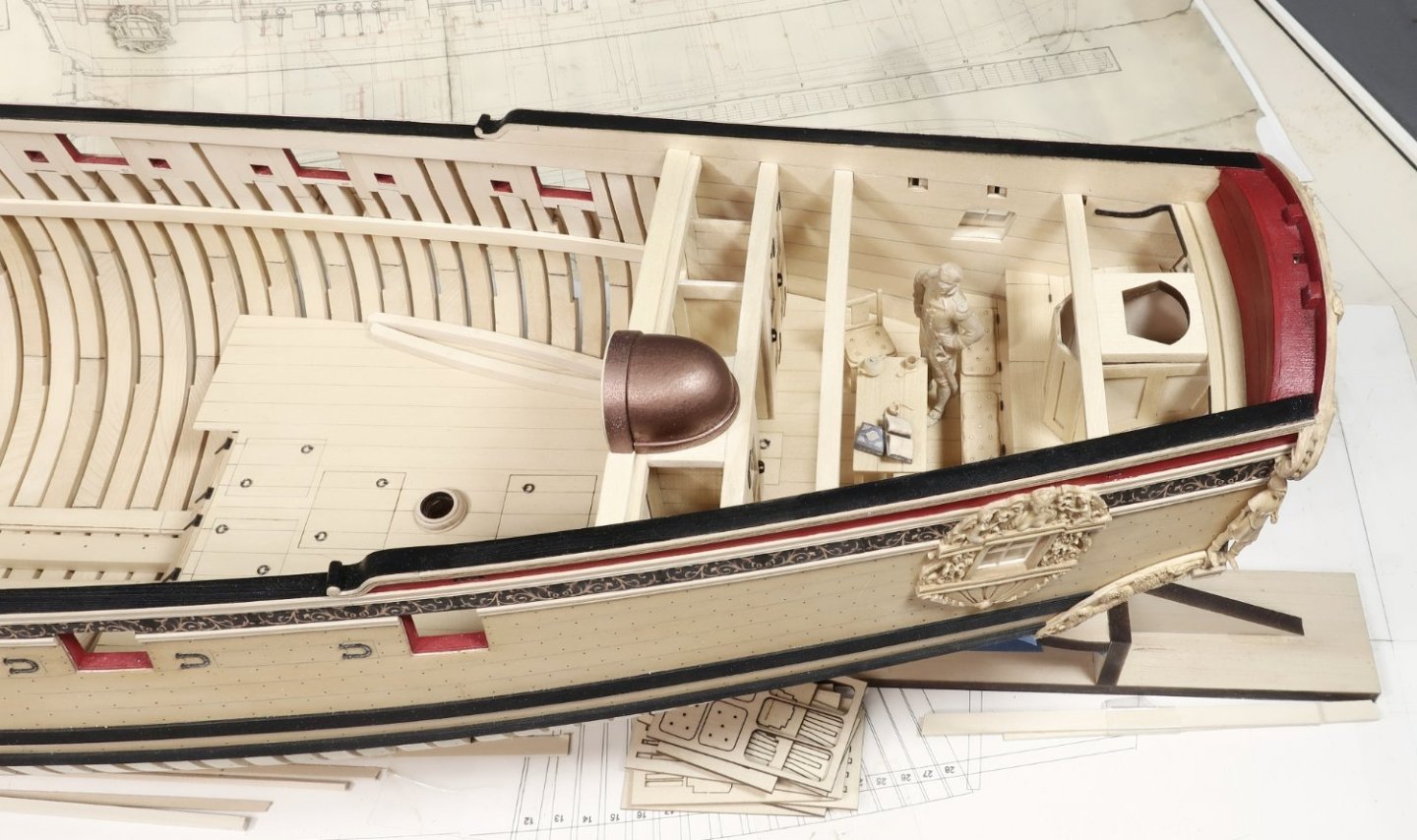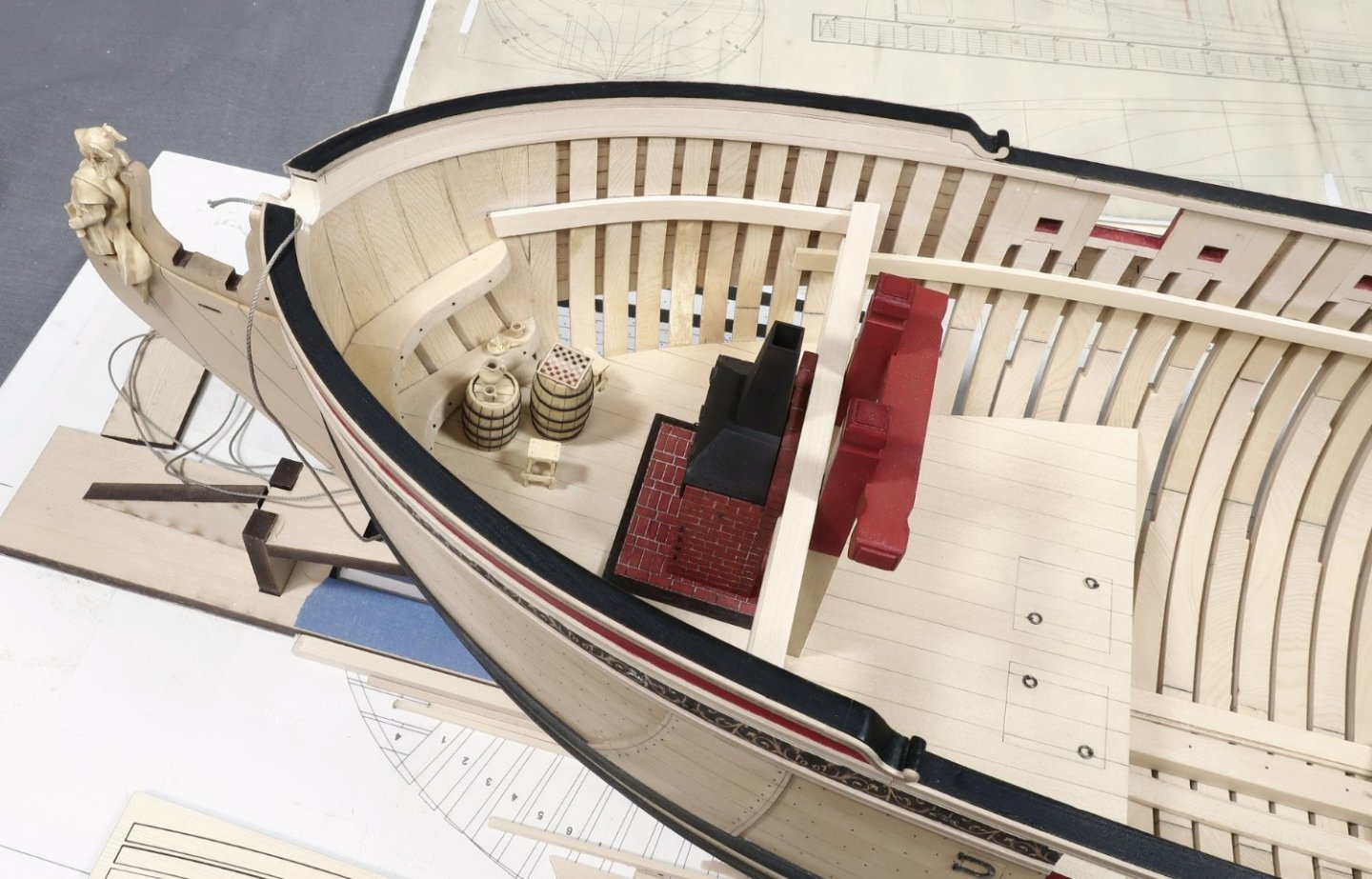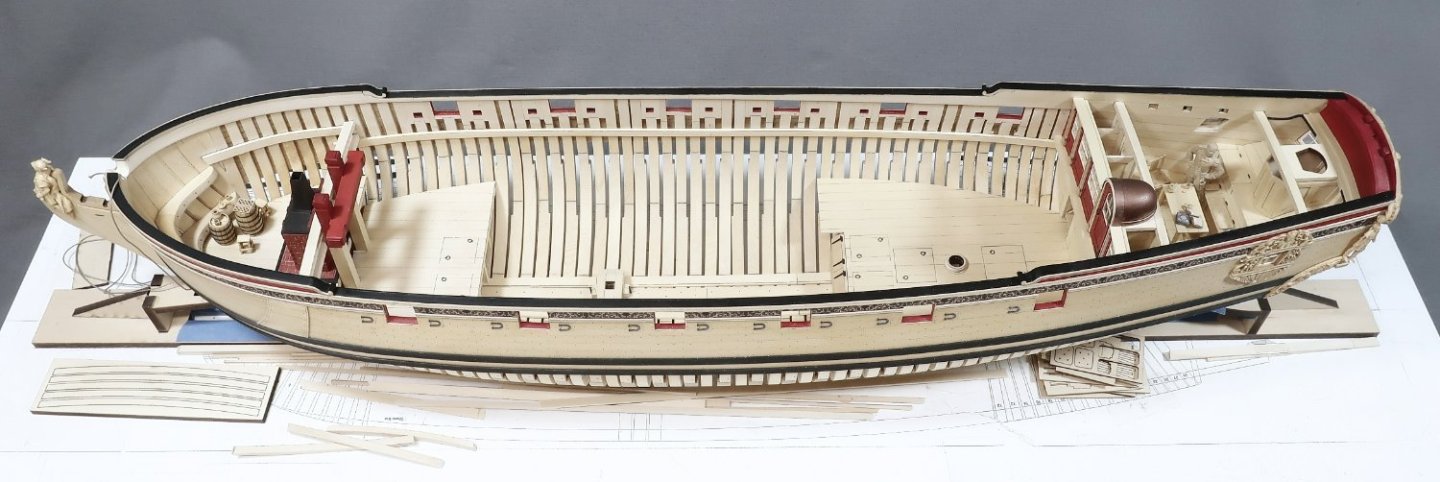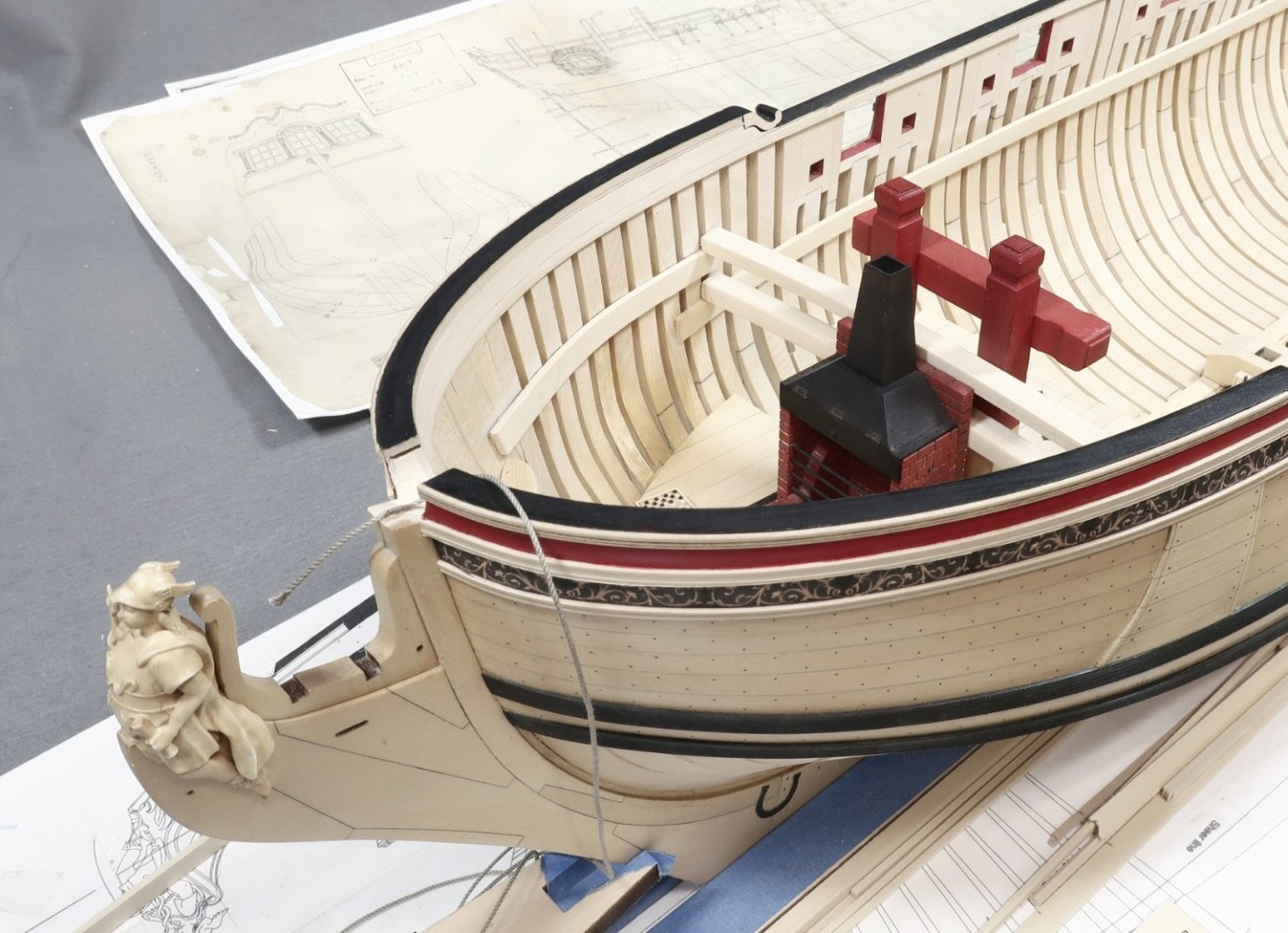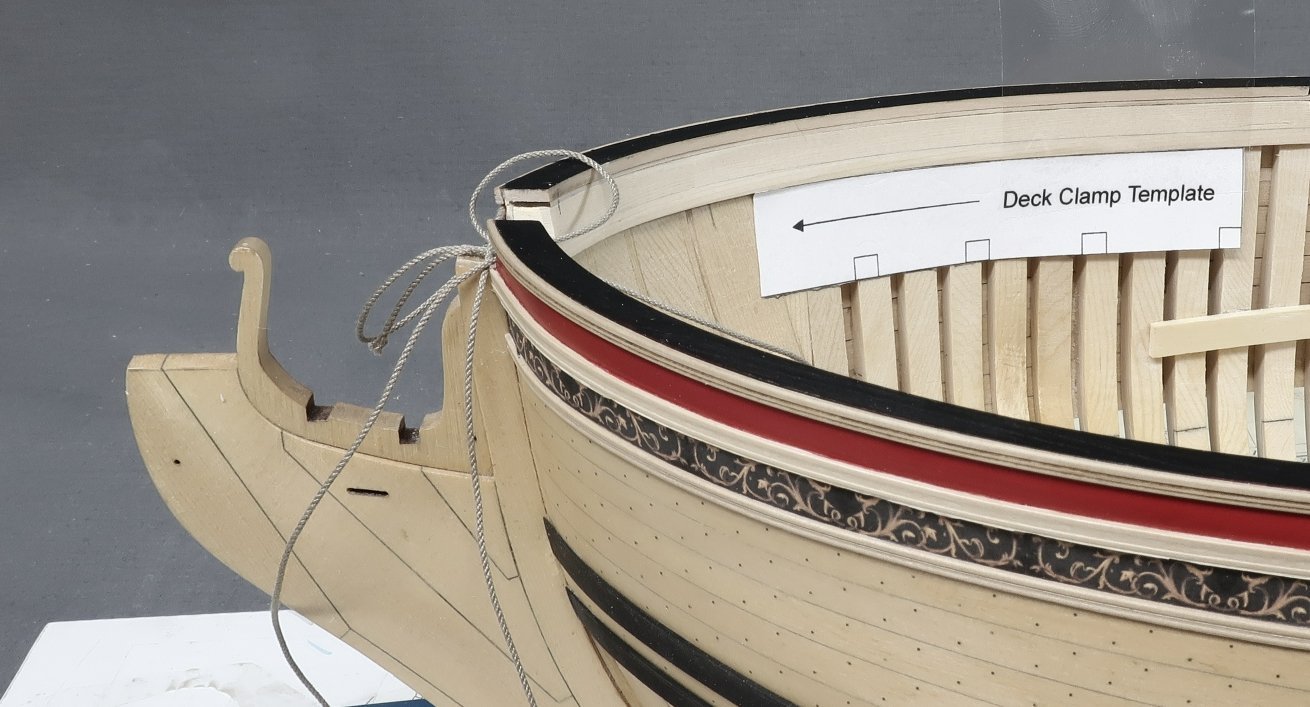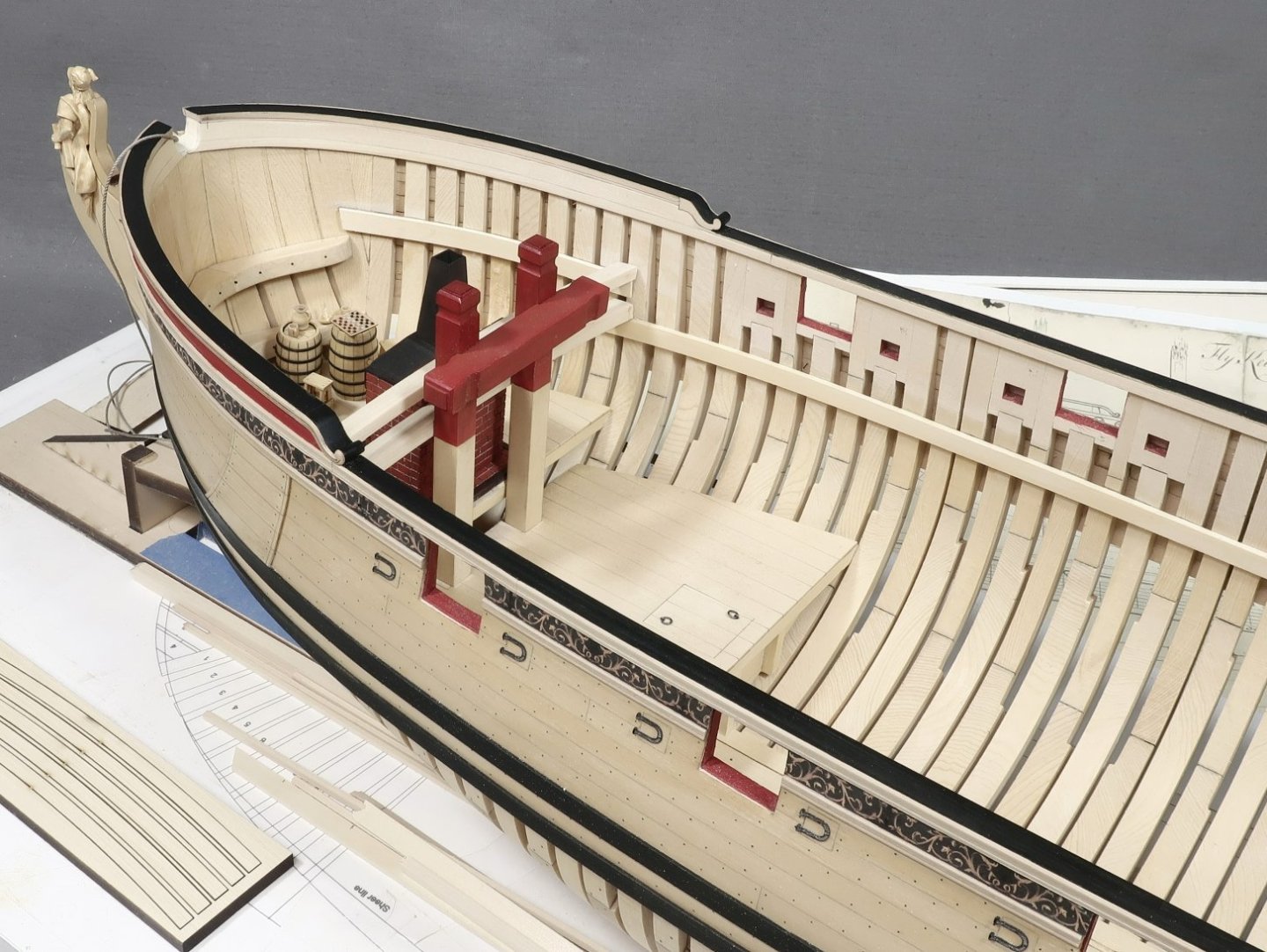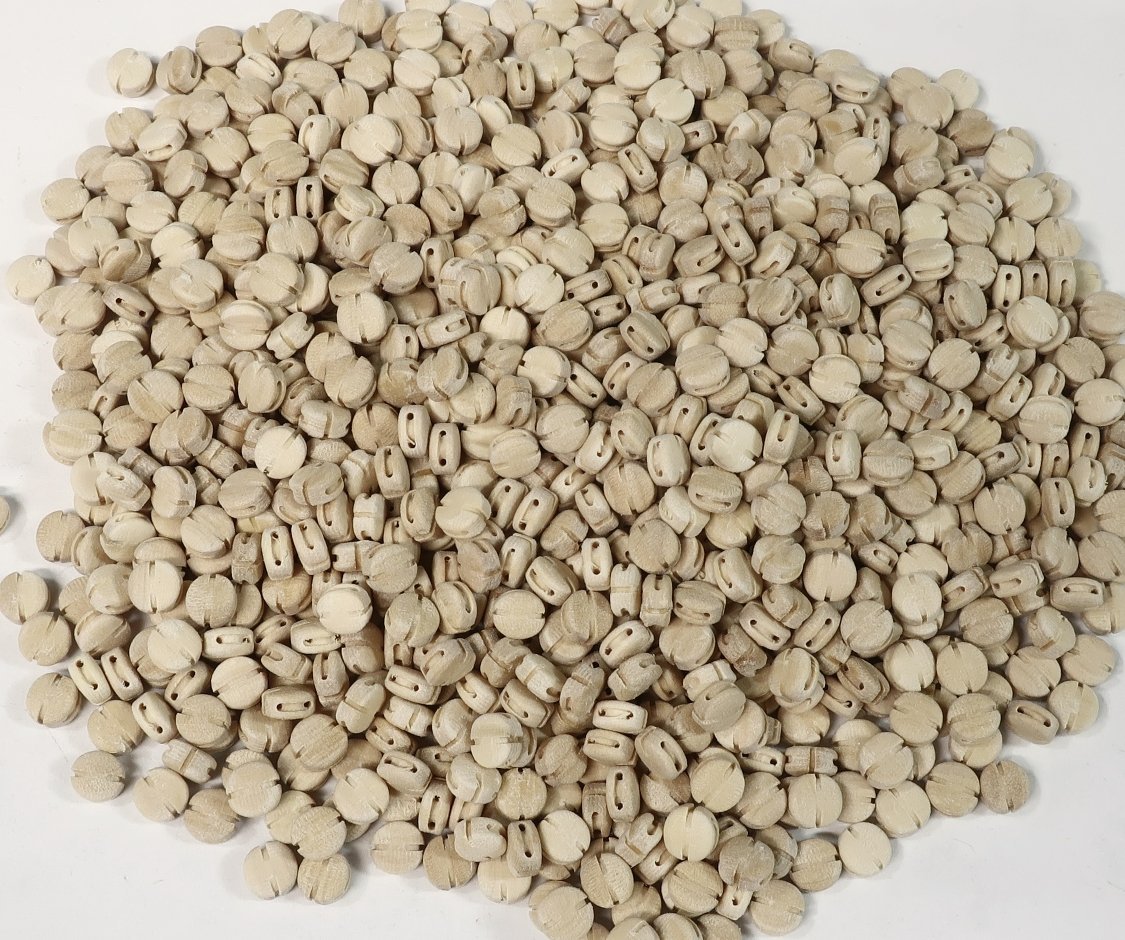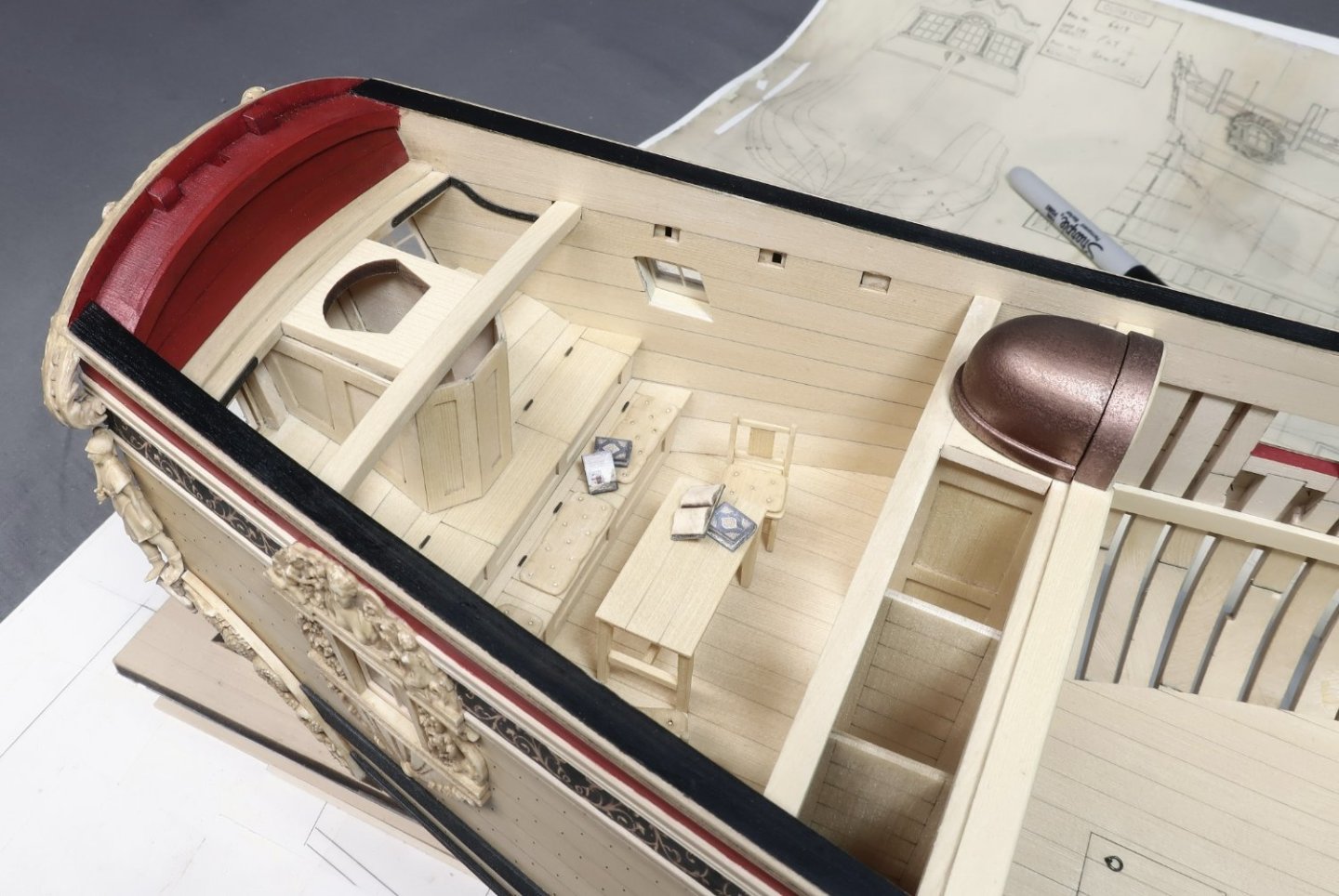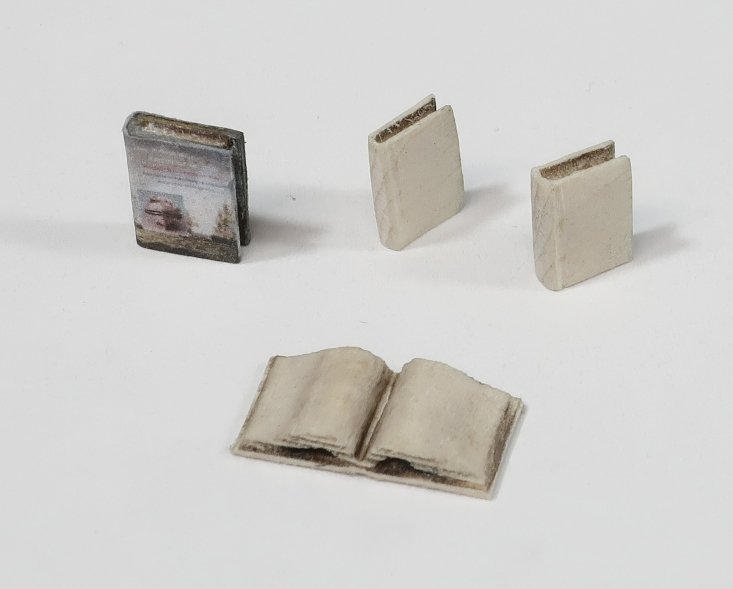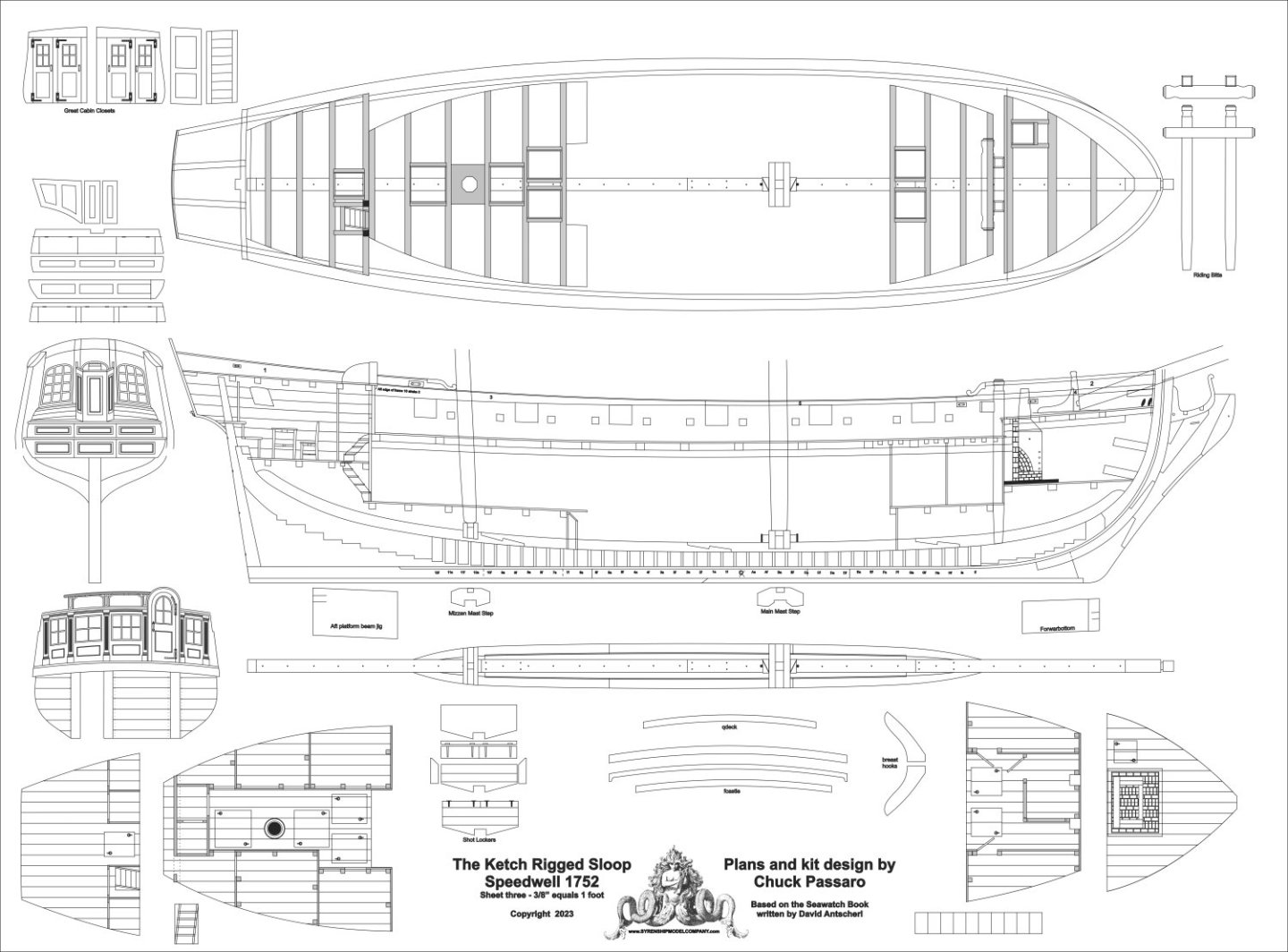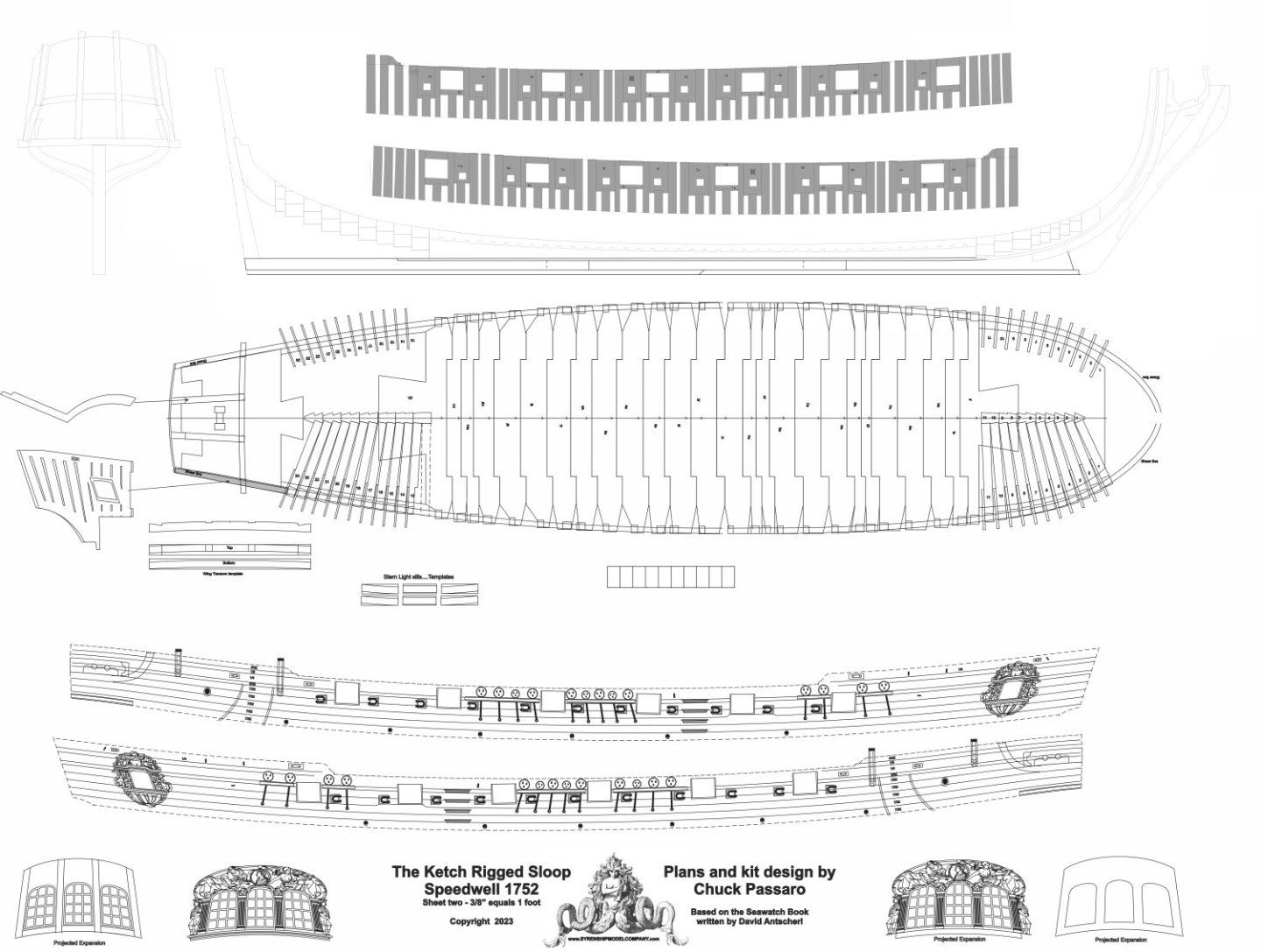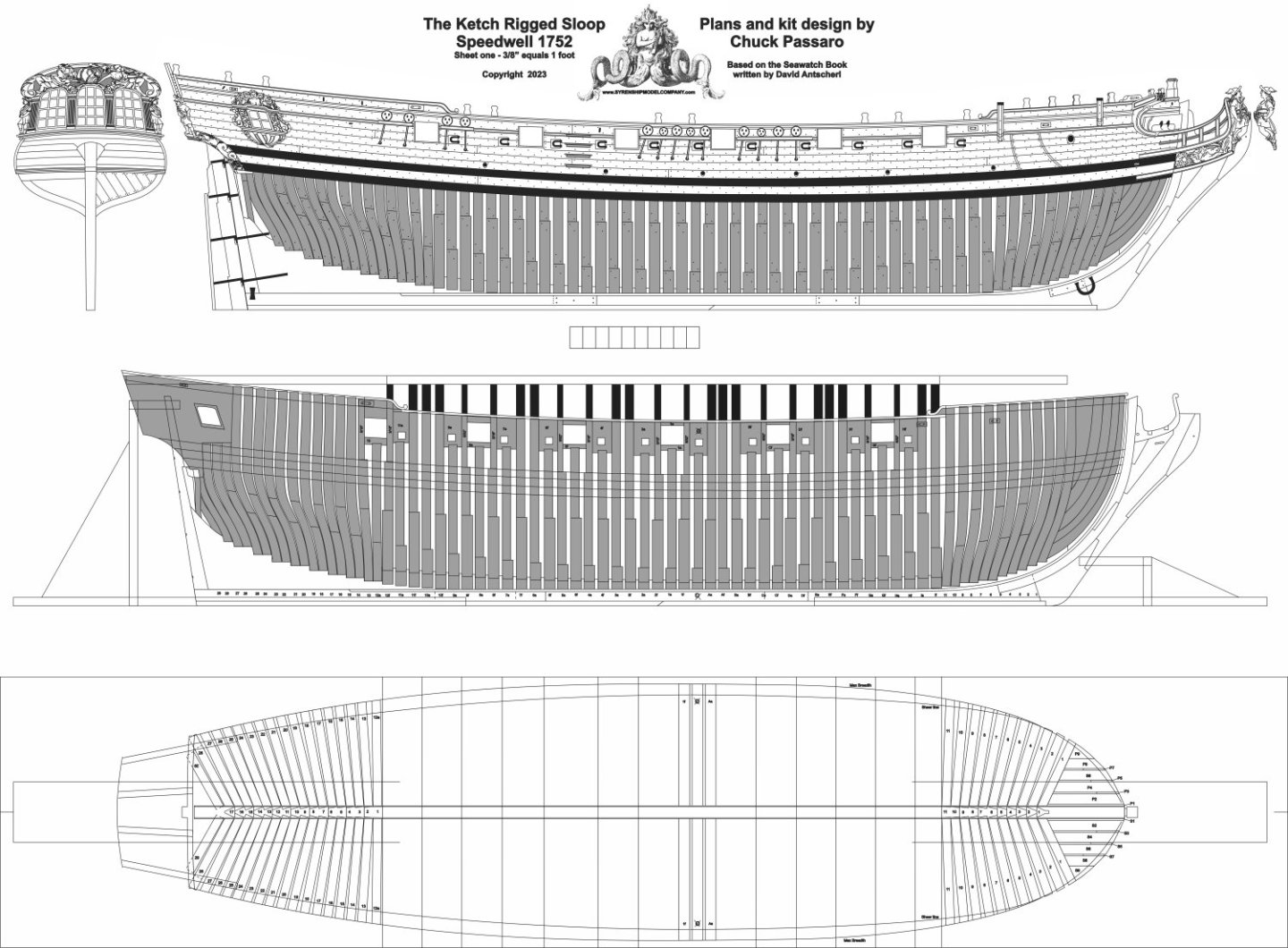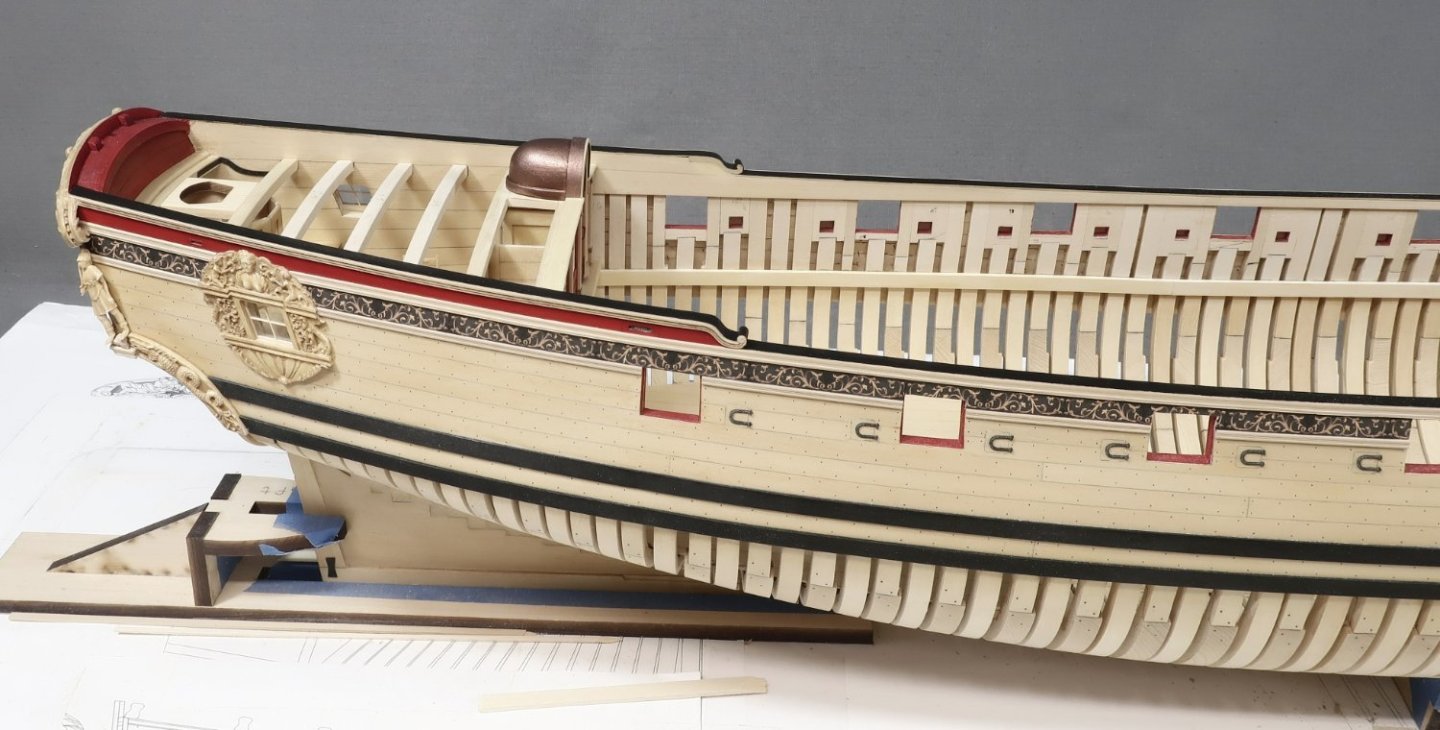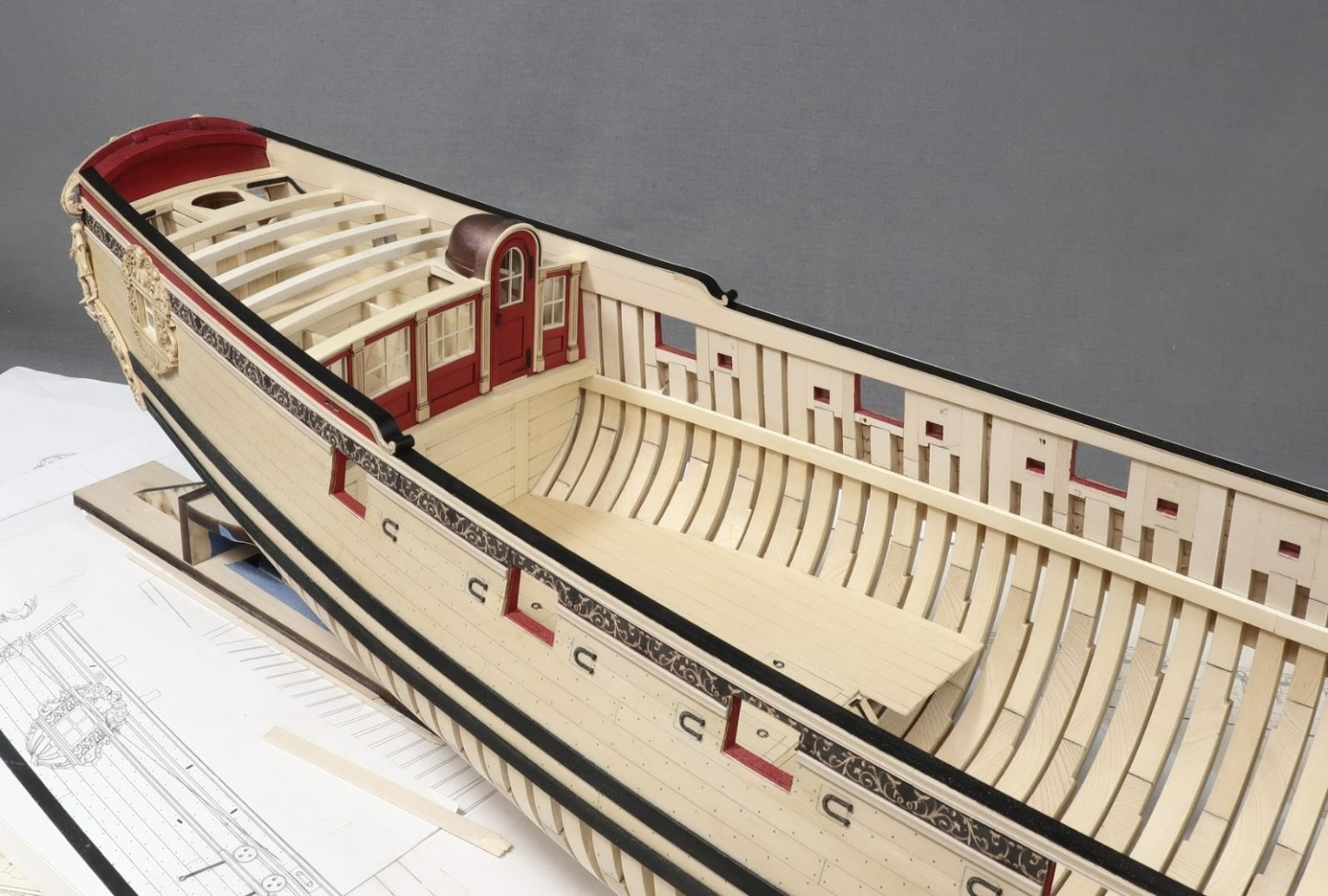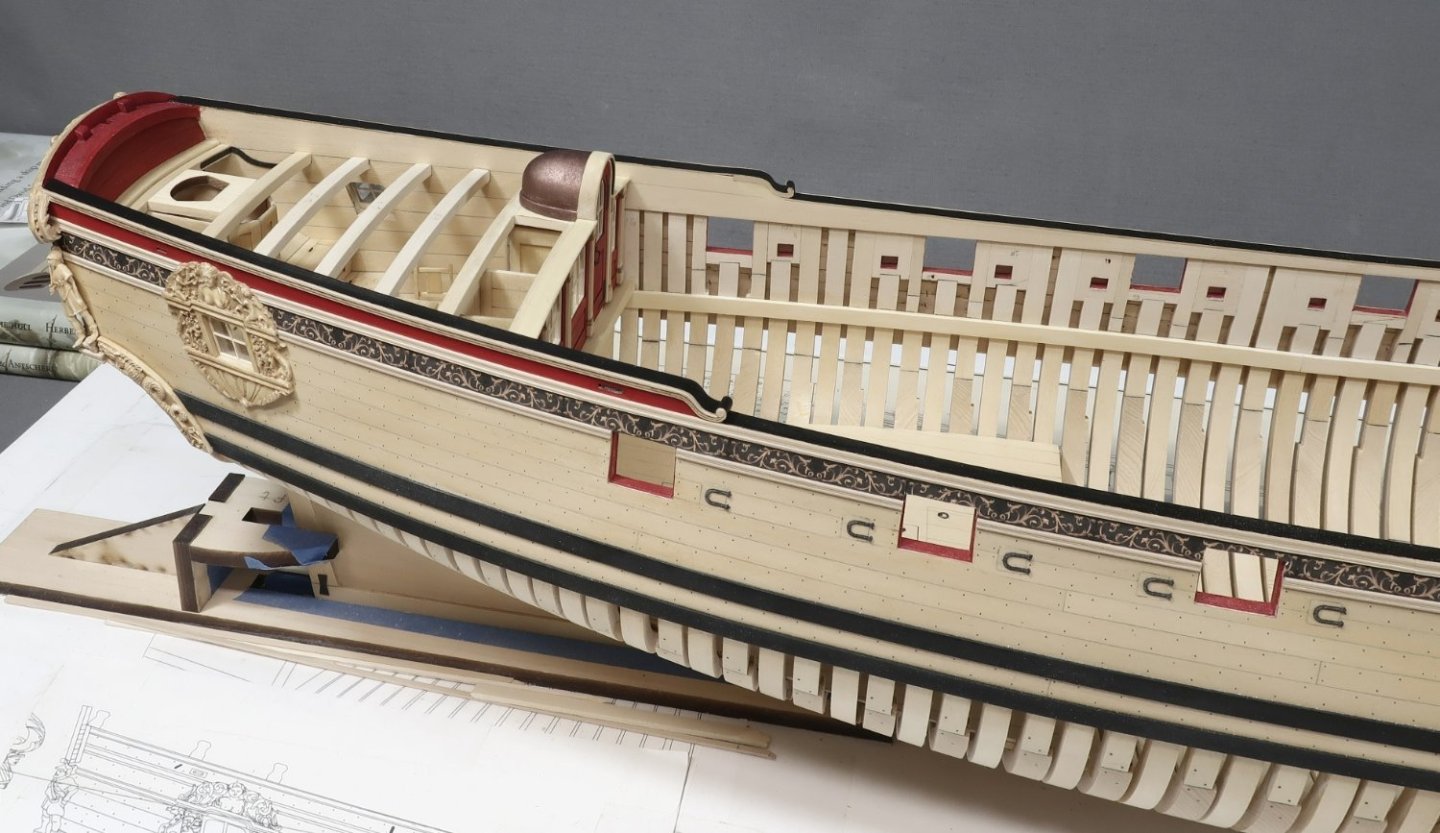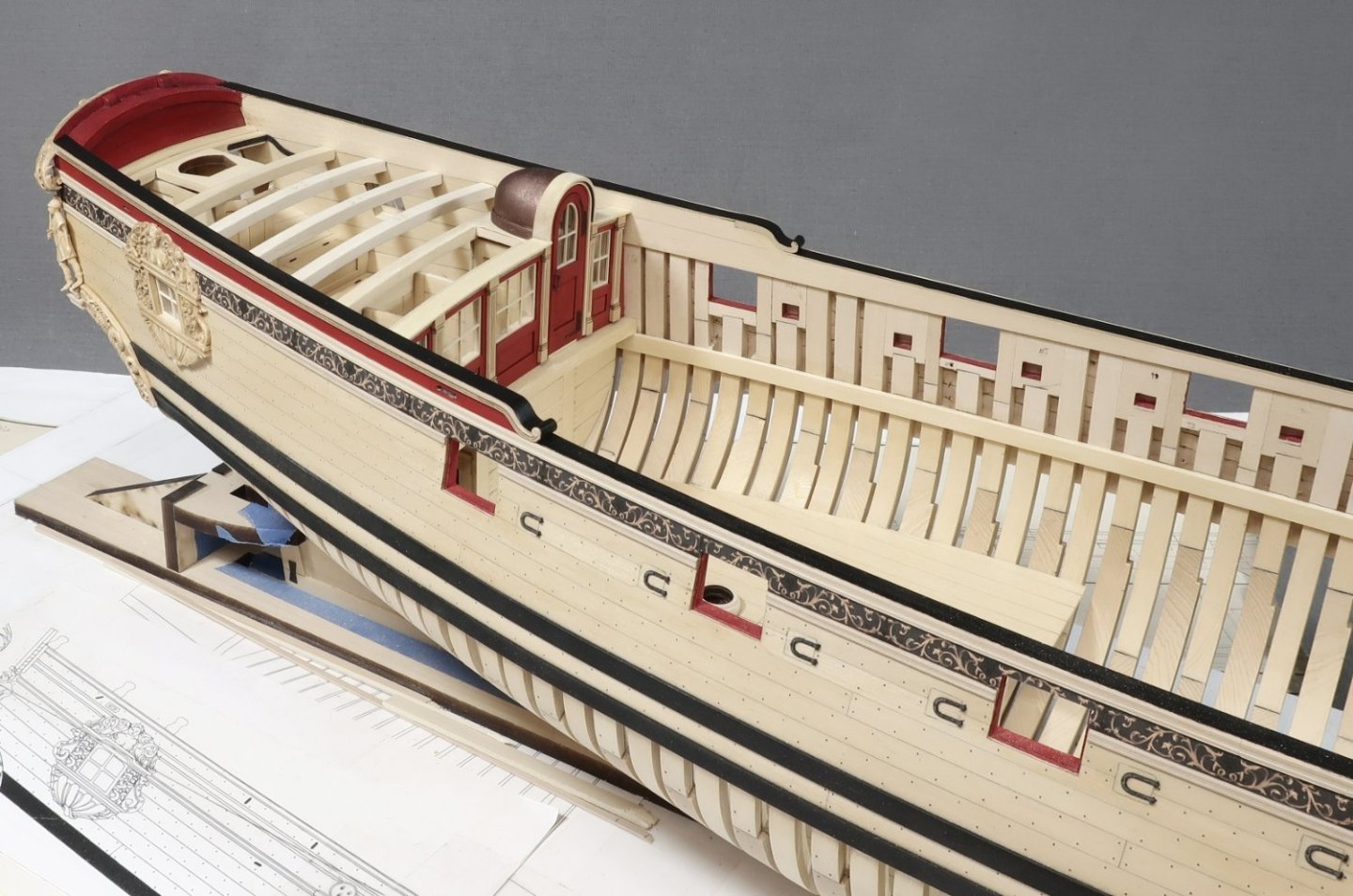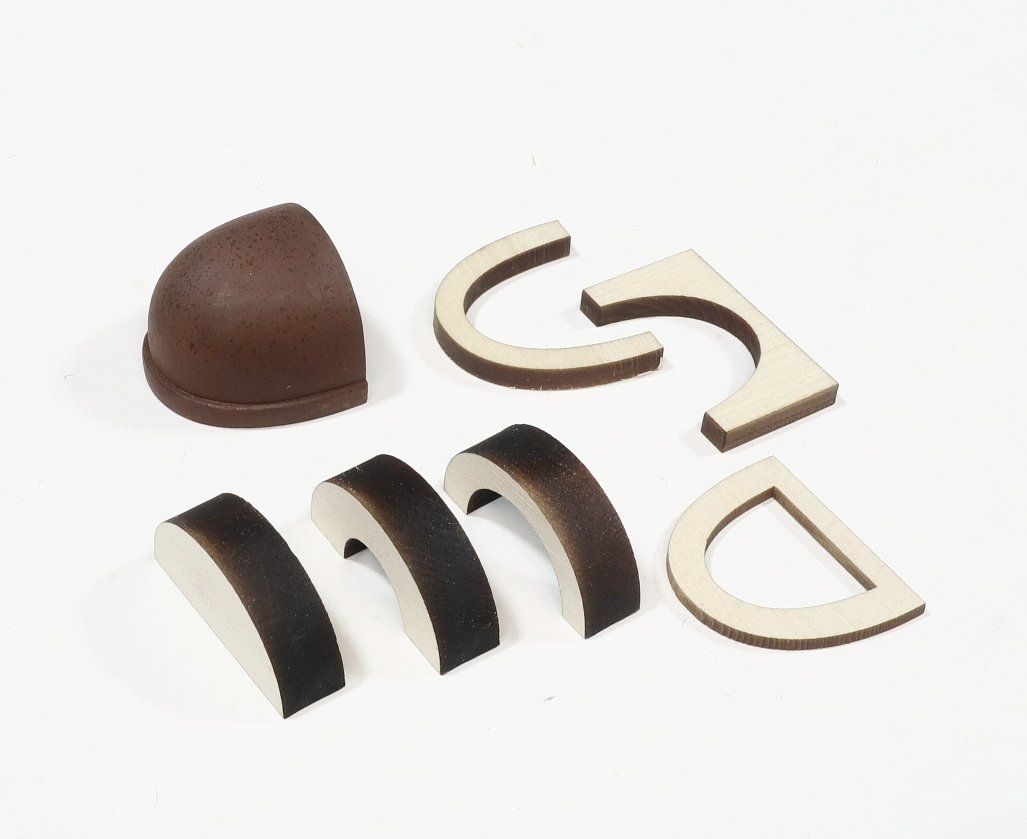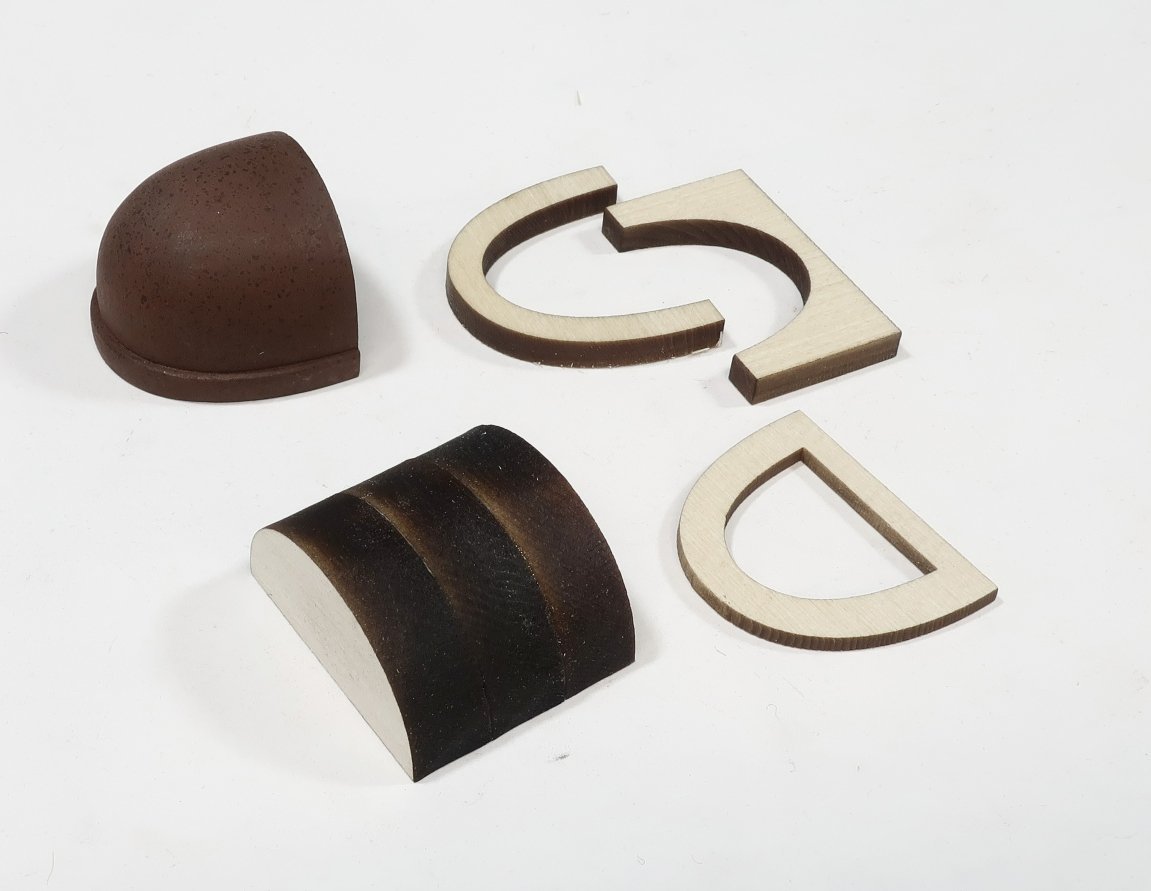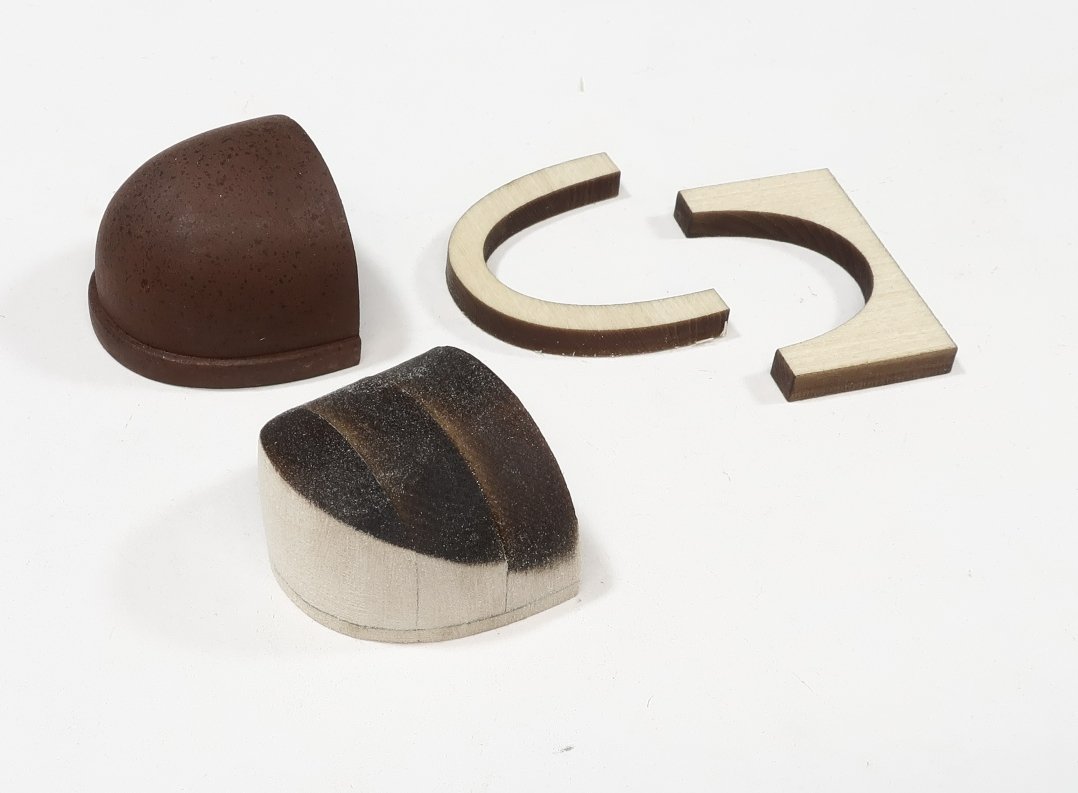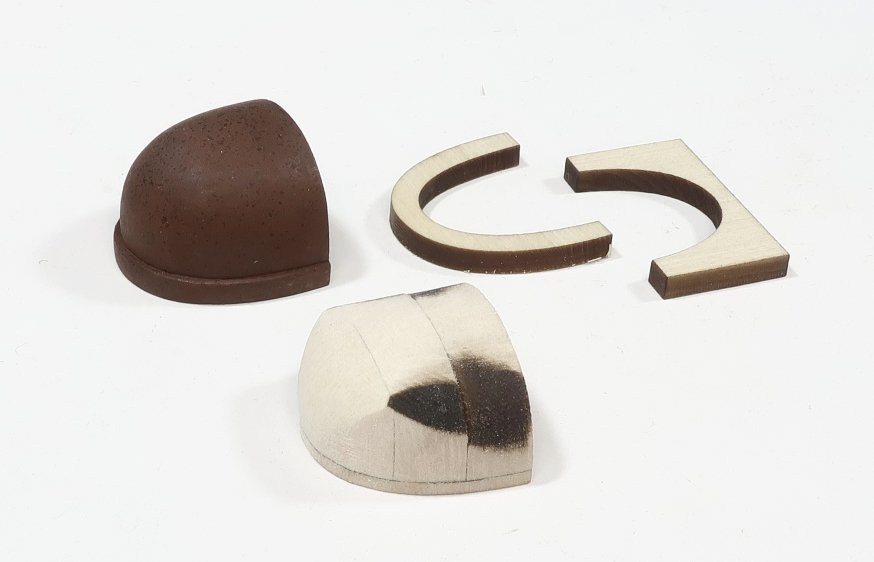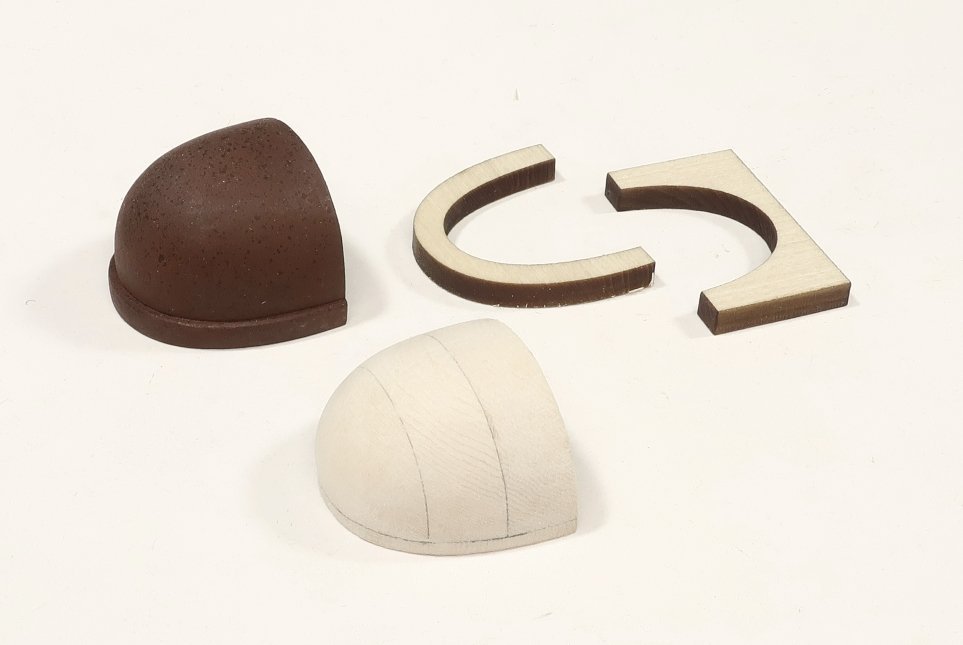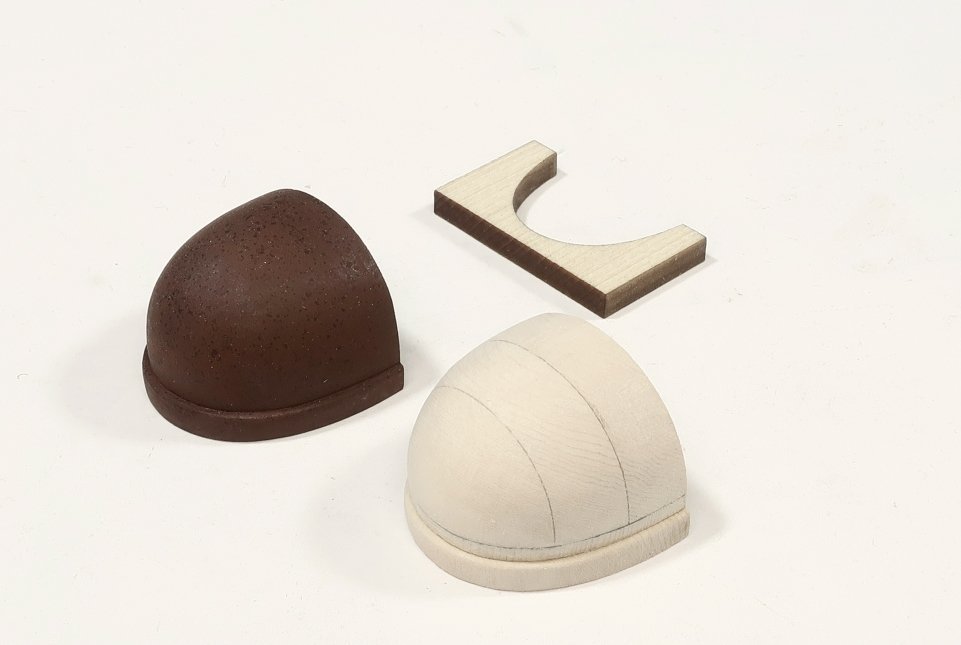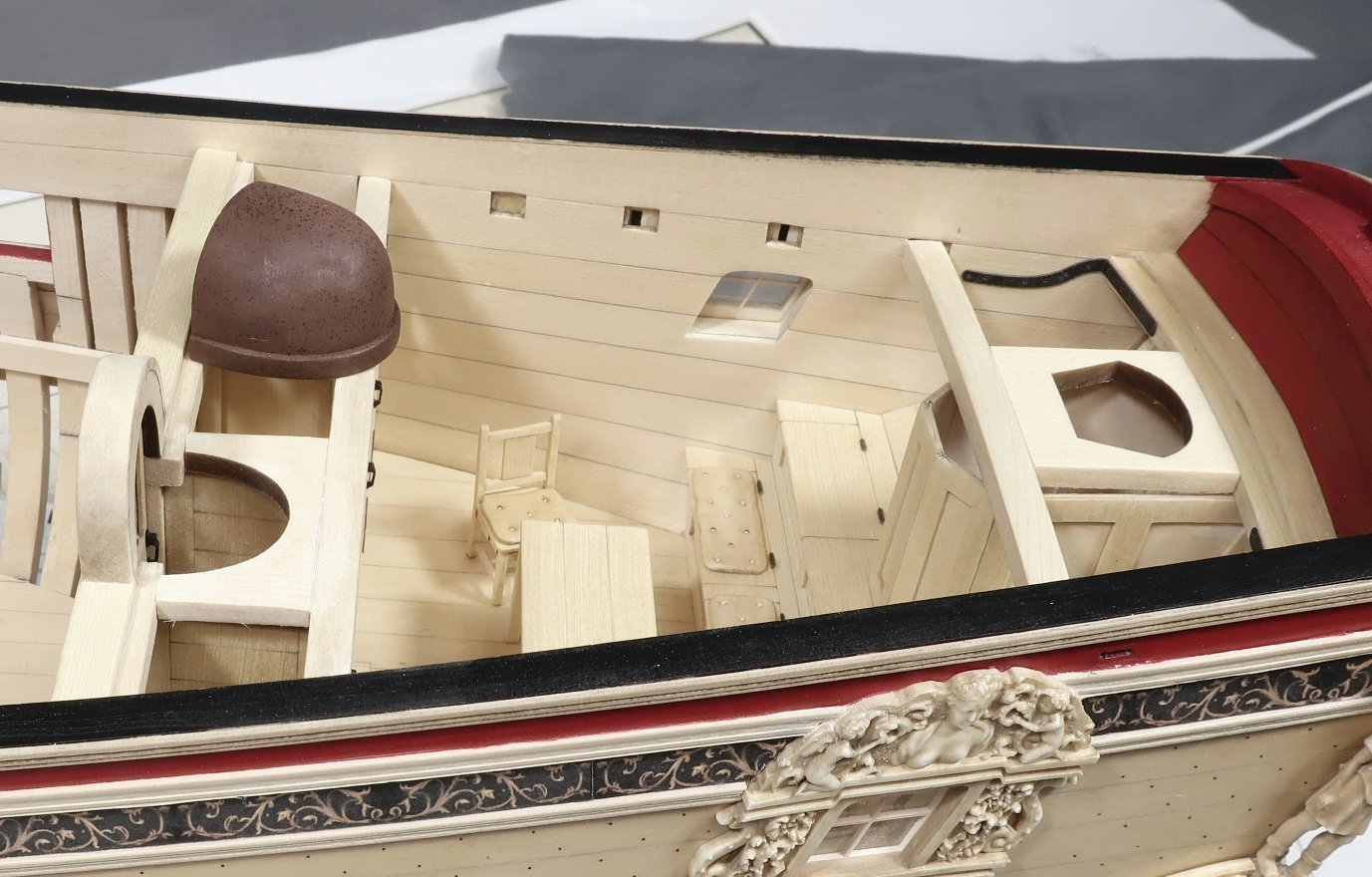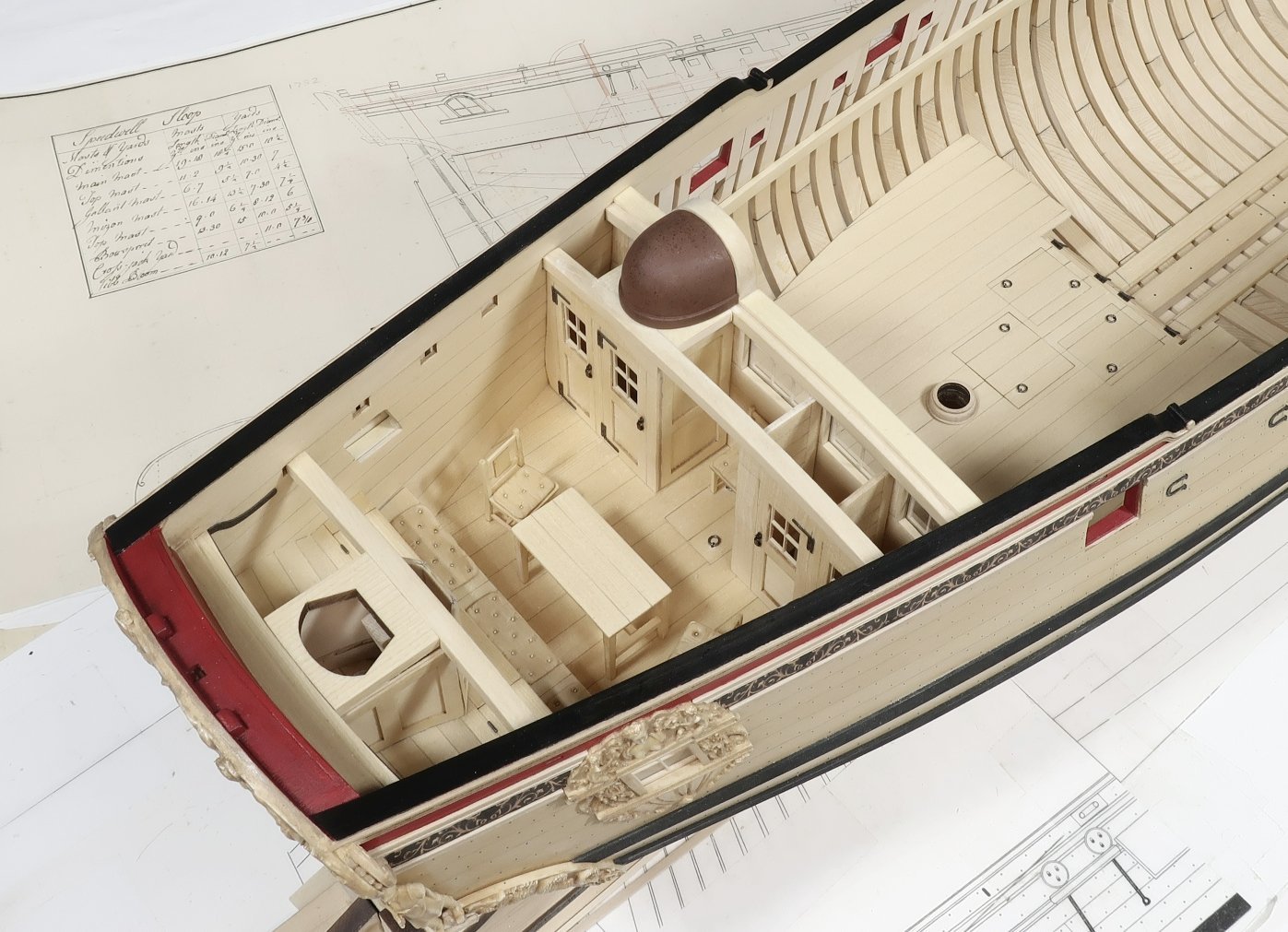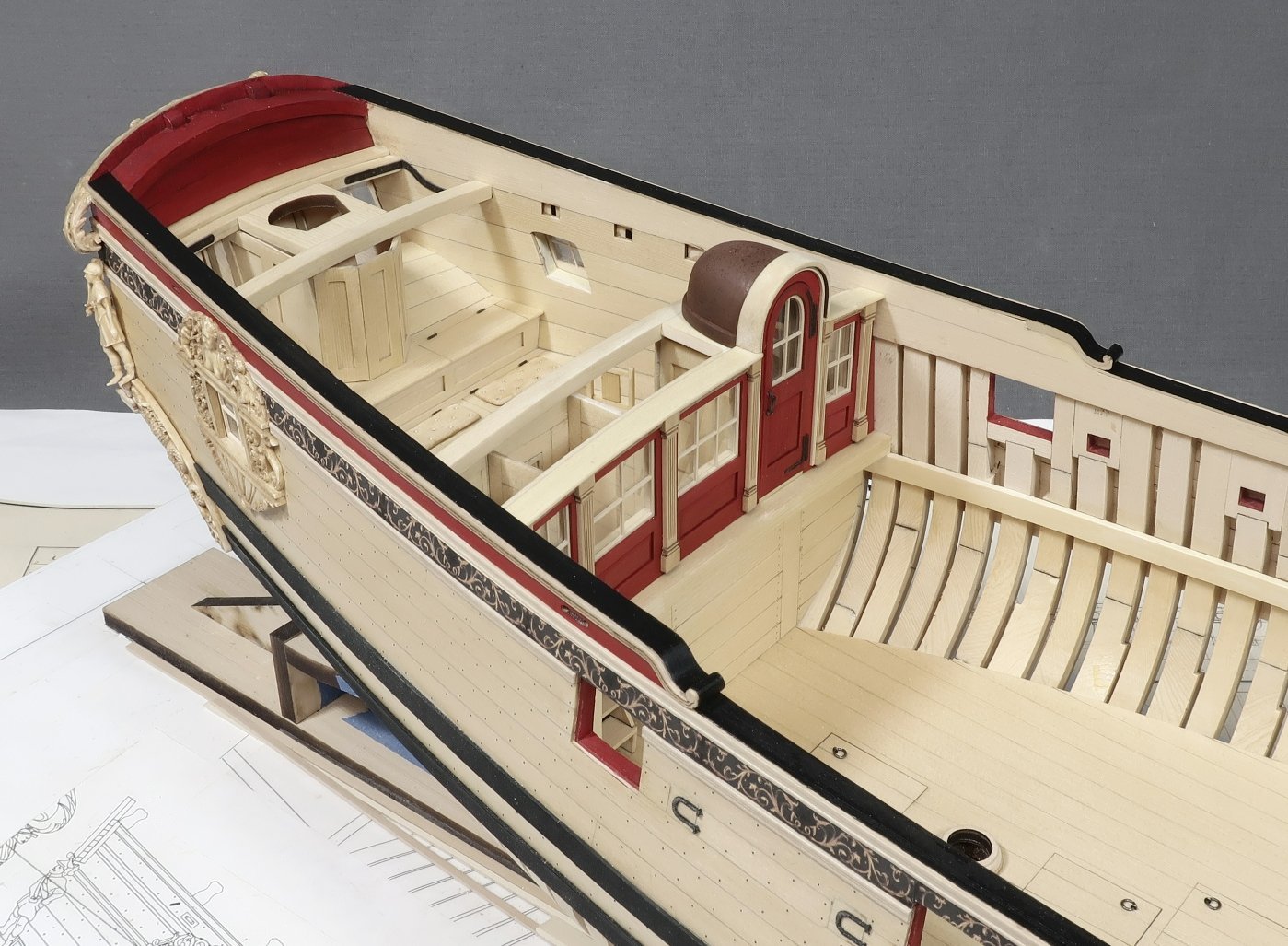-
Posts
9,703 -
Joined
-
Last visited
Content Type
Profiles
Forums
Gallery
Events
Everything posted by Chuck
-
Thank You. There is really no trick here. Its just sanding mainly. I use a coarser grit first to get the main stuff off. Most often 220 0r even 100 grit. I throw the paper away as soon as it gets loaded with char. Otherwise it just makes the wood dirty. Then I switch to a finer grit of about 320. There are occasions where I also initially scrape the char off with a straight razor or #11 blade carefully without damaging the wood. Then follow up with 320 grit. A few passes and then blow the dirty char dust away so you dont push it around the wood making it dirty again. That it really. The real trick is that I design every piece knowing that you and I have to remove the char and so it is very slightly larger than the sanded size. Otherwise like most other kit mfgs the part becomes too small. Hence the hesitancy of folks to sand so much. But not with the parts for this model or any other I have designed. If the part is too fragile however I may just go with a few passes of 320 or finer and then just paint the piece to look like wood.
-
I am not sure if I will add those details yet. I am still mulling it over. The reason why we builders add those fun details is to set our models apart from the many that will end up being made. It also means I have to build another set of every table and chair again so I can write the instructions for them...LOL. But the Speedwell project moves forward at any rate. Now working on fcastle details.
-
See my post above.....cheaper and premium quality. You just cant beat the quality for the money. If you are building Syren I recommend you get 3/64" thick strips. Although I dont remember what actual thickness I used when I designed that prototype. It was such a long time ago. That was my first kit design which I sold to Model Shipways. I believe I recieved a $500 gift certificate for Model Expo products for that design. I think they got a good deal on it, LOL. So best to check out the materials list in your kit and just replace with whatever you prefer from Joe. Cedar or Boxwood. And fun fact...this is why I started my own company and it is named for this very first ship I ever designed a kit for.
-
Thats not boxwood from ME....Its dyed yellow and a common lesser wood veneer that is very rough and stringy. It is very common and cut into strips by ME. Its a bit unethical to say the least but they fool a lot of people with those. Just do a google search for yellow dyed veneer. Its why they only carry 1mm thicknesses. A sheet will cost you about $4 retail and you can cut about 25 or 30 strips from each sheet. Maybe even more depending on the widths you want. You paid $8 for 12 strips. That is a lot of profit and I doubt they paid retail...sorry but you got snookered. It would be challenging to find a strip in your pile with a nice crisp flat edge that can be butt against another for a tight seam when planking. They do sell yellow dyed veneer of better quality wood which would hold a nice edge and be suitable for planking...but your pile of strips is not that. You paid $8 for about .80 worth of wood strips. You would have been better served to buy the same number of Yellow Cedar strips from Modelers Sawmill... $4 for 10 strips and beautiful yellow color that doesnt look artificial. Plus so many other sizes. See below. A nice hard edge as well. About 1/2 what you paid... OR better yet....buy actual Boxwood from Joe (south american) and its still cheaper than what you paid for that stuff. Ship model with yellow cedar...
-
Based on popular demand and multiple requests, a package of smaller door handles is now available. This multi-pack gives you 30 each of the 3/16" tall handles and now 1/8" tall handles. In addition ....a multi pack of smaller door hinges is also available. You get 16 each of 1/8" and 3/16" tall Hinges. In both styles....
-
One of the benefits of working at 1/32" scale is of course the size. I think its easier to handle the parts and keep things neat and tidy. But in addition to that you can really get a lot of details in there. Stuff I would never attempt to add on smaller scales. Further, 1/32 and better yet 1/35 scale is a very popular modeling scale. There are so many aftermarket parts and details available for builders at this scale. This includes figures and accessories. Like the small cups and pitcher. Its all readily available on Etsy or Ebay. Its also fun to just look. I am waiting on a few other things I made add. The barrels are Syren barrels. I am also getting some new ones in stock I think you guys will like. It might be a while though. The checker is still very tiny but that is laser cut by me including small very teensy checkers. The stools are also laser cut in cedar and very differnt from the cushy chairs in the great cabin for the officers. The cups and tea cups and teapot are all 3d prints from EBAY. They were cheap and there are so many to choose from....you can add crates and boxes full of food and pots and pans and utensils. Its really just up to you and how much fun you might want to have with it. The officer in the great cabin is from Vanguard. It had a tall hat so I removed that and just shaped some hair in the traditional pony tail of the day. I didnt want to really paint these items as I want them to all fade into the background. I want to keep it all very suggestive and simple. So rather than paint everything with realistic coloring with all the uniform colors and fanfare, I am just finishing all this stuff as if it was wood color...and carved. Its a minimalist approach so the ship itself takes center stage. But it will all be covered and just barely visible when the decks are planked. But still you might just get a glimpse and a happy surprise if you look hard enough. I think it will be fun. I do actually have a few more 1/32 and 1/35 scale odds and ends coming in the mail. We shall see if they make the cut and I add them to the model. I dont want to over do it. For all you guys who would do the same...try and stick with 1/35 scale details. They are plentiful and just a tad smaller and look better on the model. Chuck
-
Decided not to work today and instead start working on the fcastle beams. Its basically the same as establishing the height for the gundeck beams and deck clamps. There is a template provided for you. But yes you can measure it any way you feel comfortable. Trace the bottom of the template in pencil. The line you just drew will become the TOP of the deck clamp for the fcastle beams. I will repeat that...The top edge of the deck clamp. Once the deck clamp is in position which is a small length of 1/4" x 1/16" cedar strip, we can proceed with the first deck beams. There are two we must contend with first. One is a gundeck beam....and the one above that is the first fcsatle beam. They are both 1/4" deep but the fcastle beam on top is much thinner. Those beams were not as heavy. In the photo above you can see how the aft edge of these two beams are all flush with the riding bitts. This is important. The riding bitts are not glued in position yet and we can use them to establish the position of both beams. The beams must of course be cleaned of char and cut to length so they sit nicely on to of the deck clamps for them. These two beams can be glued in position but still refrain from gluing the riding bitts in place. Also do not glue in the fire hearth yet. Although this will sit flush against both beams and can help you position them as well. Next up I will start working on the remaining 3 fcastle deck beams but I wont glue them in position just yet.
-
Your blocks are looking great. I imagine they take a while to print. But that is something that cant be avoided. My CNC blocks take forever to make. But the good thing is no laser char as you mentioned earlier. They are pretty crisp. I just now started packaging up a new batch of singles that were completed today. It takes a very long time as the cnc machine is insanely slow. But I would suggest that you try just using some white and yellow ochre weathering powder to make them look like wood. You could also go darker if you prefer. But I find the weathering powders cover the gray easily and you cant see any build up or brush strokes. No loss of detail at all. Here is a picture of the pile that I am just now packaging up. no gluing them up or laser char.
-
Not really...there are no drawings of the frames in the kit plans because they are not needed. All the frame parts are laser cut. The other plan sheets will be released however as PDF docs.... But yes there are plans available at 1/4" scale in the seawatch books. They are included in the two volume set. They are of course slightly different than my approach but everything you need is in those two sets for a scratch build. Chuck
-
My daughter was very complimentary about my latest model. But she said I had to put something on the table. It looked too bare and boring. So not wanting to disappoint my lovely daughter I added some laser cut books. Yes that is a very very tiny Seawatch book about Speedwell Volume 1 I believe. Great reading while at sail on those quiet evenings!! The cupola really isnt that shiny....its just the very bright overhead light and the photo camera lights. It is actually much darker and subdued. I think. LOL. The books are just 1/4" tall so very very very tiny. Cleaned up after laser cutting and ready for a printed cover scaled down....But here you see them in the raw state. These are right off the laser cutter and just sanded to remove the char. The close ups are brutal but they look really good at regular viewing. About the size of your fingernail.
-
So I am so close to listing the first two chapters folks. Maybe Sunday or Monday. I have one test shipment going out to get an idea of shipping across the country. Once I know that I will list the remaining sets I have made for sale on the site. I have one favor to ask....Please read below. I am NOT limiting production so no need to jump on this. In fact if you are not ready to start a build log and start building immediately I would ask that you wait for the next batch of chapter sets. Seriously asking here. If you are currently working on a model and are several months or even a year away from starting Speedwell, It would suck for these to sit on a shelf. Especially when I know of at least ten guys who are waiting patiently to begin building Speedwell right now. I know some of you are more than a year away from starting so please dont buy from this batch. I will be making more consistently for the next few months before I start even thinking about making chapter 3 parts. There will be plenty of opportunity. Let the guys ready to start building get first crack at these please. Also if I havent mentioned it....this will be a big model. If you plan on rigging her it will be 52" long or thereabouts.....and about 40" tall. The hull unrigged is 32" long. So keep this in mind. Remember its a 3/8" scale model. A big girl..... The chapter sets will come with printed plans. Sheets one and two with the first chapter of parts. The remaining will come with the chapter sets when needed. Here are a few just to give you an idea.
-
Greg convinced me!!! I also spent a great deal of time looking at the contemporary model. I also decided to coper the top of the doorway. It just made sense to do that. I painted a plain piece of paper with the copper paint and cut a narrow strip. This allowed me to leave a nice neat edge on the front of the bulkhead. I left just a 1/64" of the top showing so it looks like molding around the doorway. I am sure I will get used it over time.
-
Here are two photos of the second version which I made. This one is finished with copper paint and sprayed with dull coat. The copper paint was just from one of those copper leafing pens. It worked really well actually. This was my best result with the copper attempts. I havent glued the cupola on yet so I can keep trying both and pick the one I like best.
-
Indeed it does. That meant the first try went into the scrap bin. But I eventually figured it out. Mike I originally used copper paint but it was too much for my tastes. It just looked out of place and your wye went right to it too much. Even when toned down I just decided to go brown. But who knows…maybe you will like it. Its just a personal preference thing. It would literally be the only thing on the model with that finish…its a bit distracting to my eye.
-
The cupola... I was undecided if it made sense to add the cupola now or wait until after the deck is planked. But I decided it might be easier to plank around it so I went and completed it. It will be shaped in a sort of lift method. Below you see all the parts needed laser cut along with the first prototype completed. Step 1...glue the 3 layers of curved roof together with the thinnest curved horseshoe at the end as shown. Step 2... Glue the 1/16 piece on the bottom which will give you the ultimate rounded shape you are shooting for. Step 3... Sand the roof at first to that rounded shape along the sides. Use the piece glued to the bottom as a guide. Step 4... Then sand the top to shape. Specifically the back end of the dome to establish a nice curve. Dont over sand the forward side. Just remove the char and you will be good. Step 5... Finish off what remains by sanding the remaining parts to a nice dome shape. It should look like the bottom of a test tube cut in half. Now at this stage you could also take a Dremel with a small sanding tip and shape the inside. But why bother. It will never be seen. You can make it as thin as an eggshell if you desire but seriously there is no point. You should remove the cross piece from the opening on the forward side though. There is no reason to keep that now that it is all shaped. That was from the 1/16" layer that you glued to the bottom of the assembly early on. Step 6...Take the last remaining laser cut horse shoe piece (1/8" thick) and sand the char from the outside edge. Also round of the top outside edge. When you place the cupola on top it should leave a consistent lip all around it. This gives you the illusion of a molding piece all around the bottom of the cupola. Step 7...Paint it copper or brown or whatever color you prefer. I didnt want to go with shiny metallic copper paint. I opted for a medium brown color. But before you can add it to the model the framing for the cupola needs to be added between the deck beams. That is the last laser cut piece. Just sand the char from it and position it as shown. No need to clean the char from the center because you will never see it. center it behind the door. Step 8... Glue the cupola in position after making sure it fits snug against the door frame. It should also leave a little lip around the top of the door frame being slightly smaller in size. For now I have left the rim around the top of the door frame bright. But I may decide to paint it the same brown color to match the cupola later on. I havent decided yet. I want to wait until after a build the railing and have the deck planking all done. I will see how it all looks at that time. This finishes work on the qdeck for now....I am going to finally move to the fcastle area.
About us
Modelshipworld - Advancing Ship Modeling through Research
SSL Secured
Your security is important for us so this Website is SSL-Secured
NRG Mailing Address
Nautical Research Guild
237 South Lincoln Street
Westmont IL, 60559-1917
Model Ship World ® and the MSW logo are Registered Trademarks, and belong to the Nautical Research Guild (United States Patent and Trademark Office: No. 6,929,264 & No. 6,929,274, registered Dec. 20, 2022)
Helpful Links
About the NRG
If you enjoy building ship models that are historically accurate as well as beautiful, then The Nautical Research Guild (NRG) is just right for you.
The Guild is a non-profit educational organization whose mission is to “Advance Ship Modeling Through Research”. We provide support to our members in their efforts to raise the quality of their model ships.
The Nautical Research Guild has published our world-renowned quarterly magazine, The Nautical Research Journal, since 1955. The pages of the Journal are full of articles by accomplished ship modelers who show you how they create those exquisite details on their models, and by maritime historians who show you the correct details to build. The Journal is available in both print and digital editions. Go to the NRG web site (www.thenrg.org) to download a complimentary digital copy of the Journal. The NRG also publishes plan sets, books and compilations of back issues of the Journal and the former Ships in Scale and Model Ship Builder magazines.






